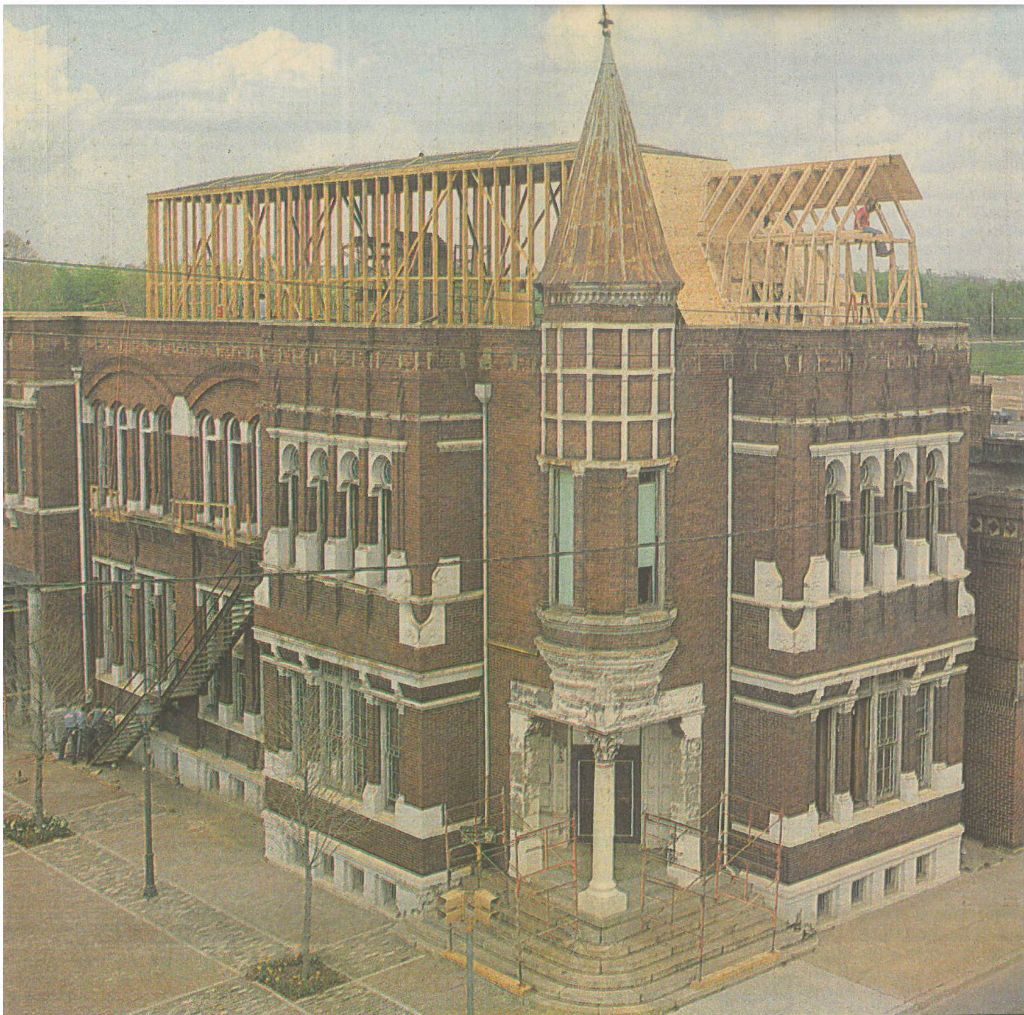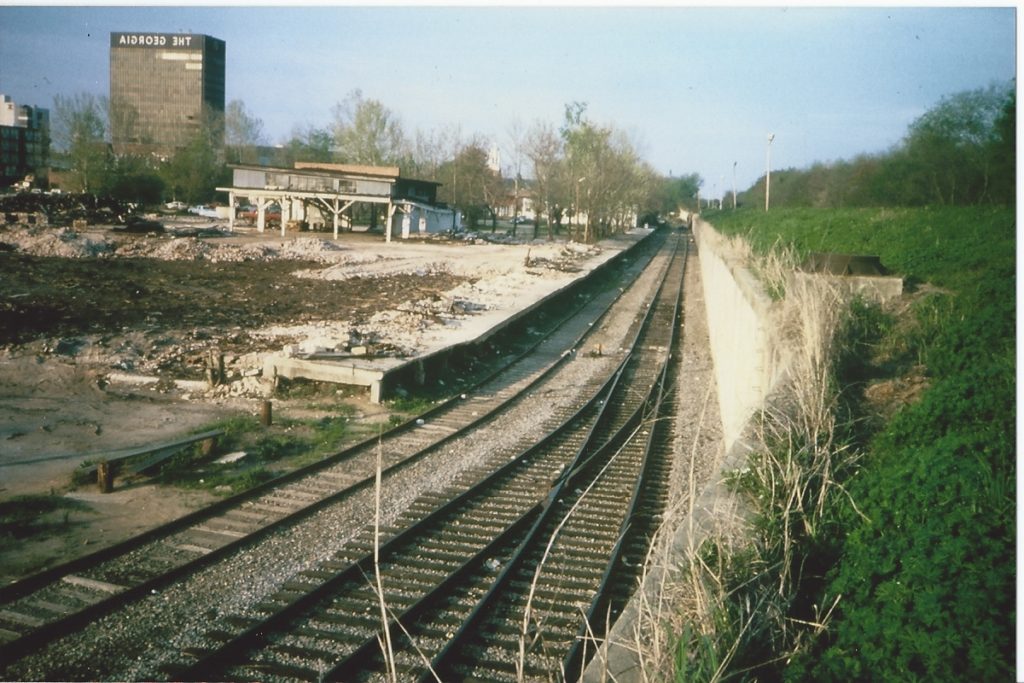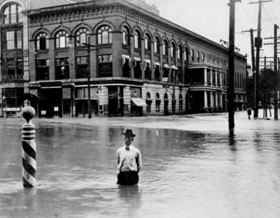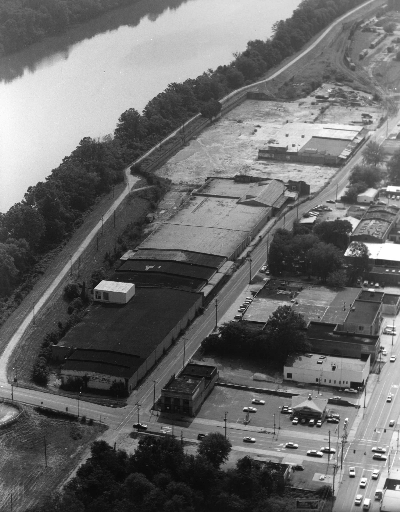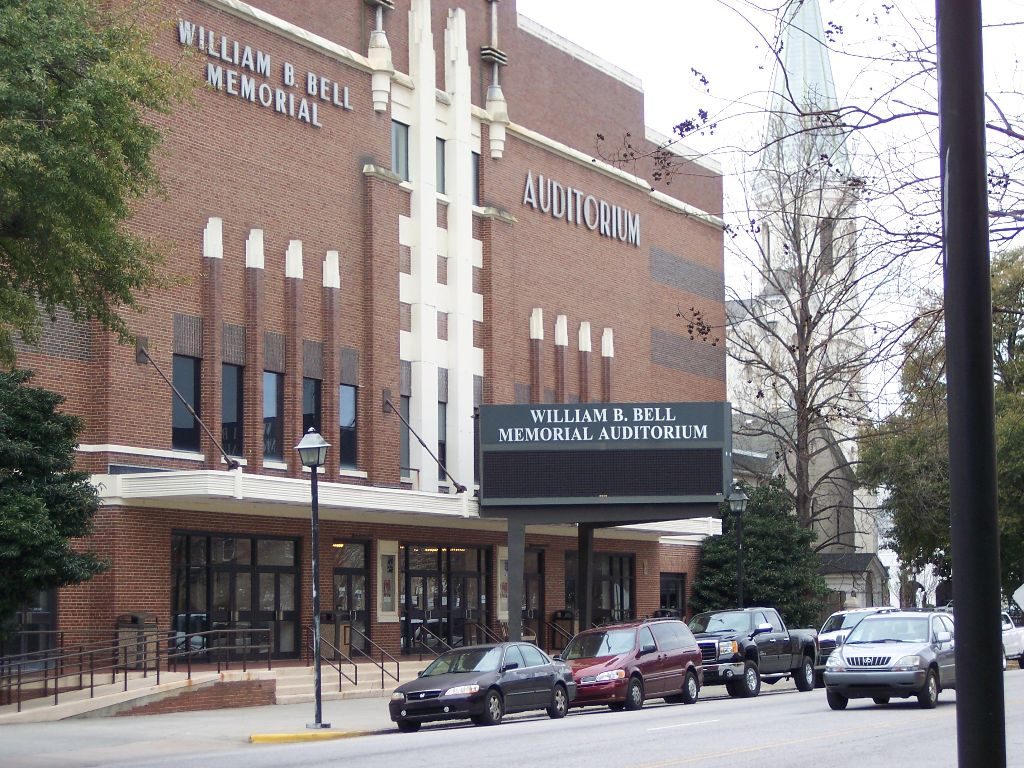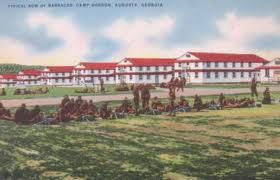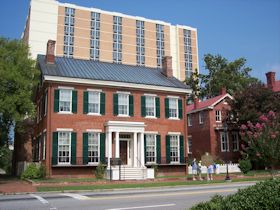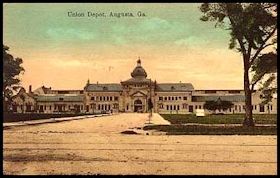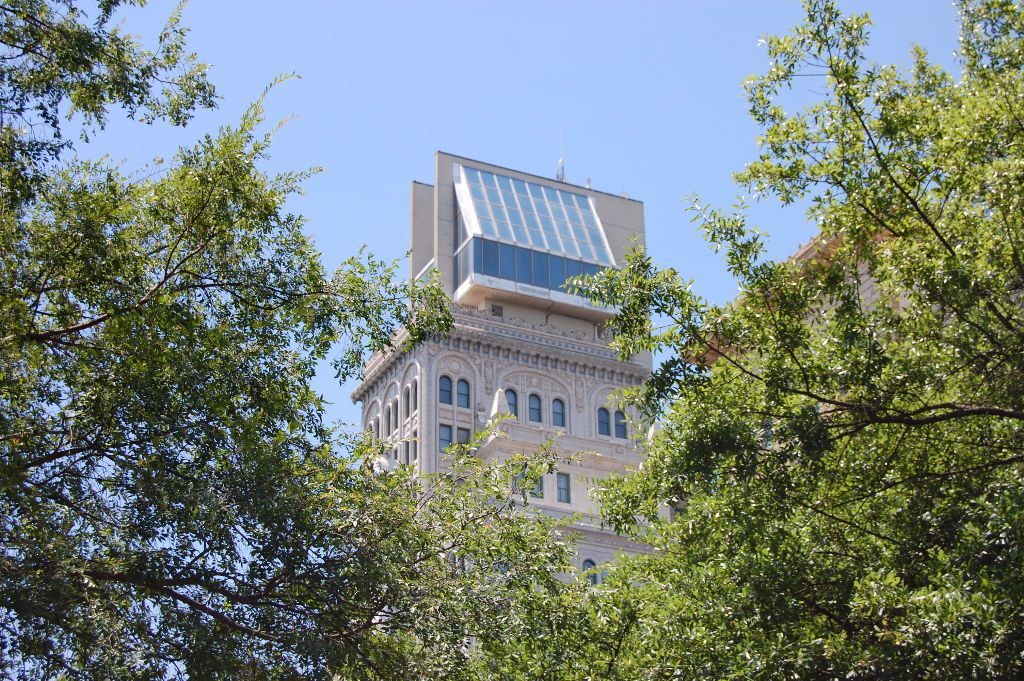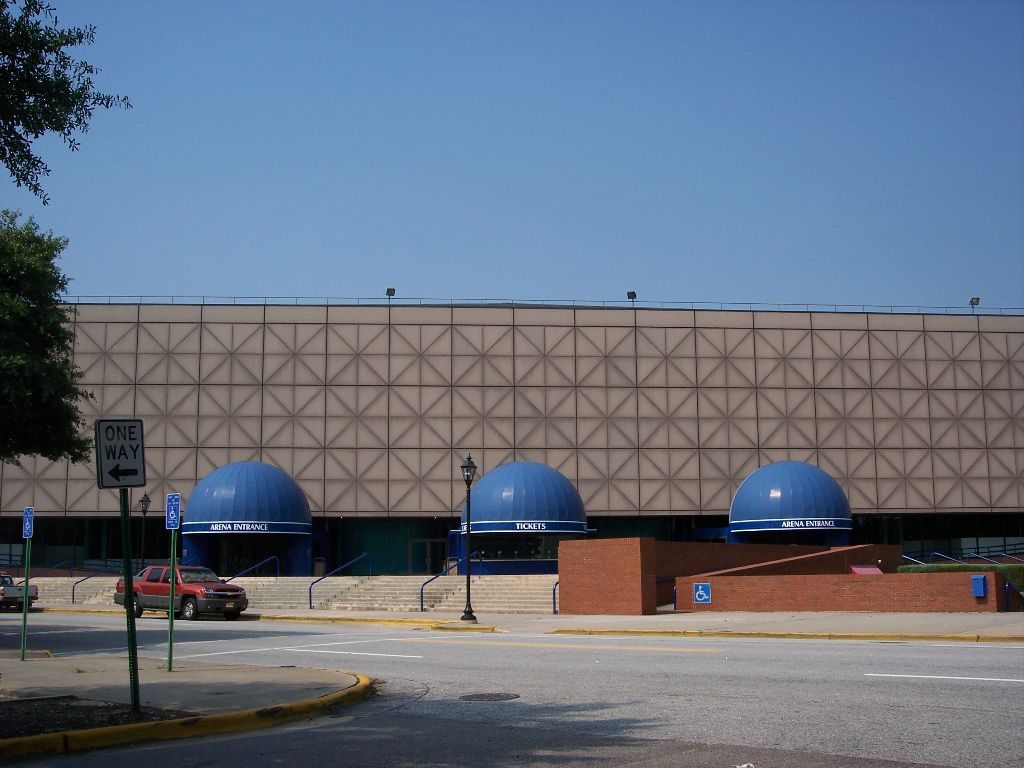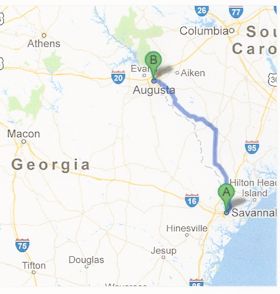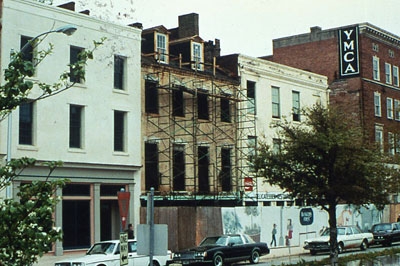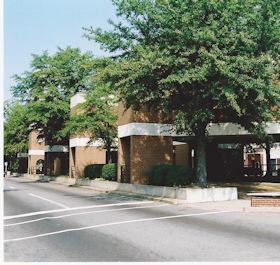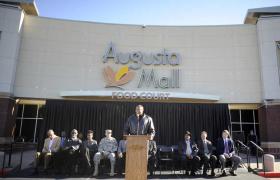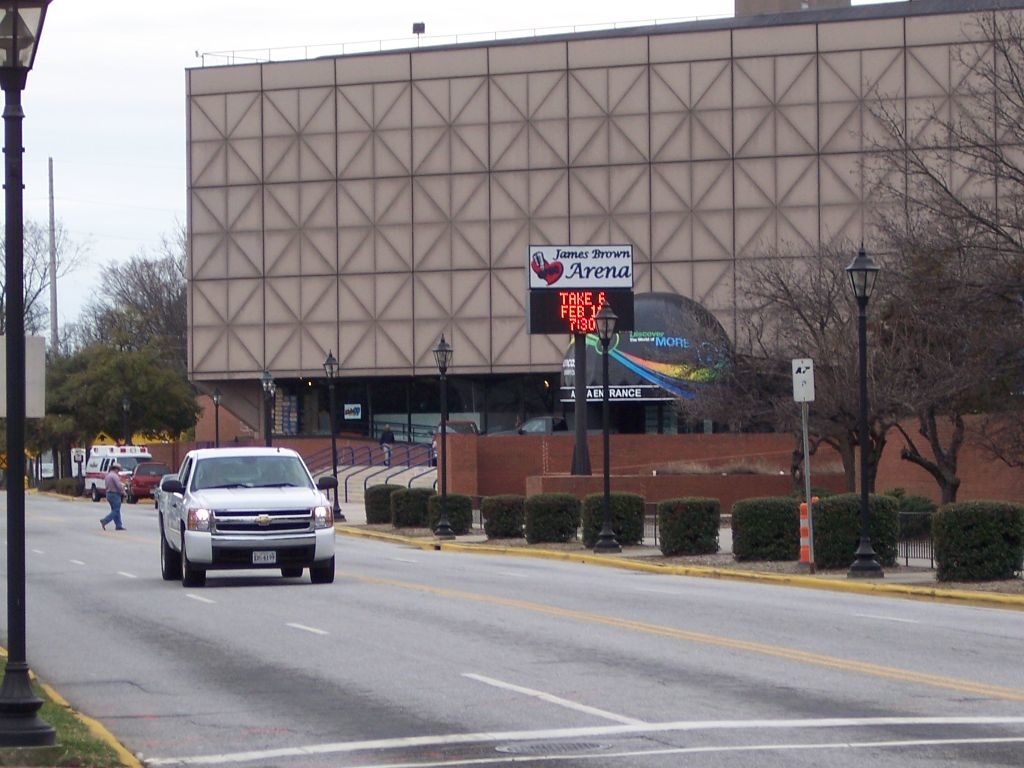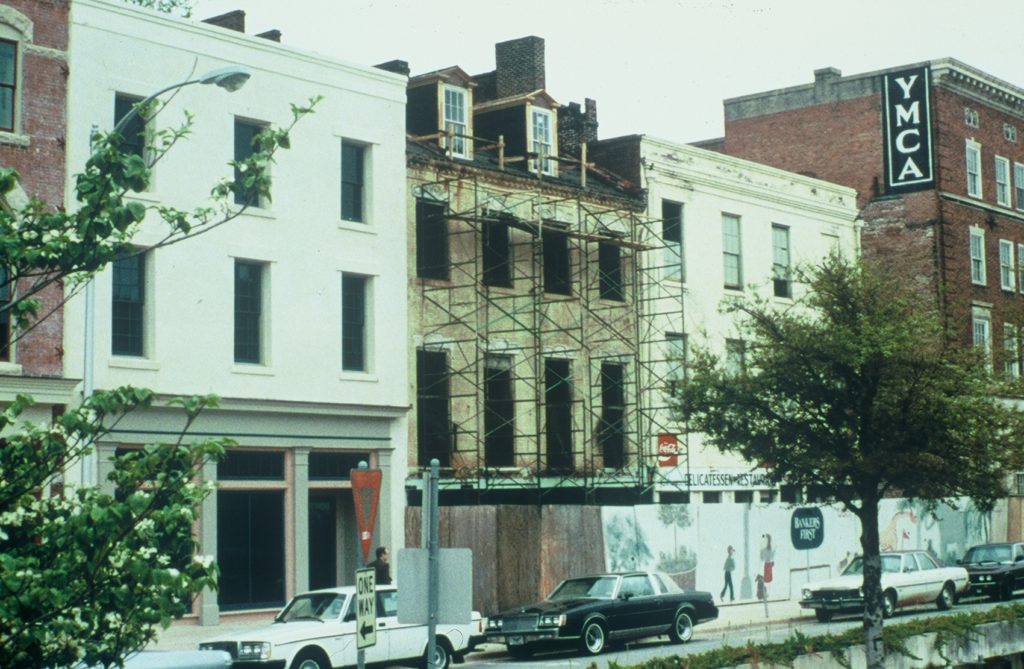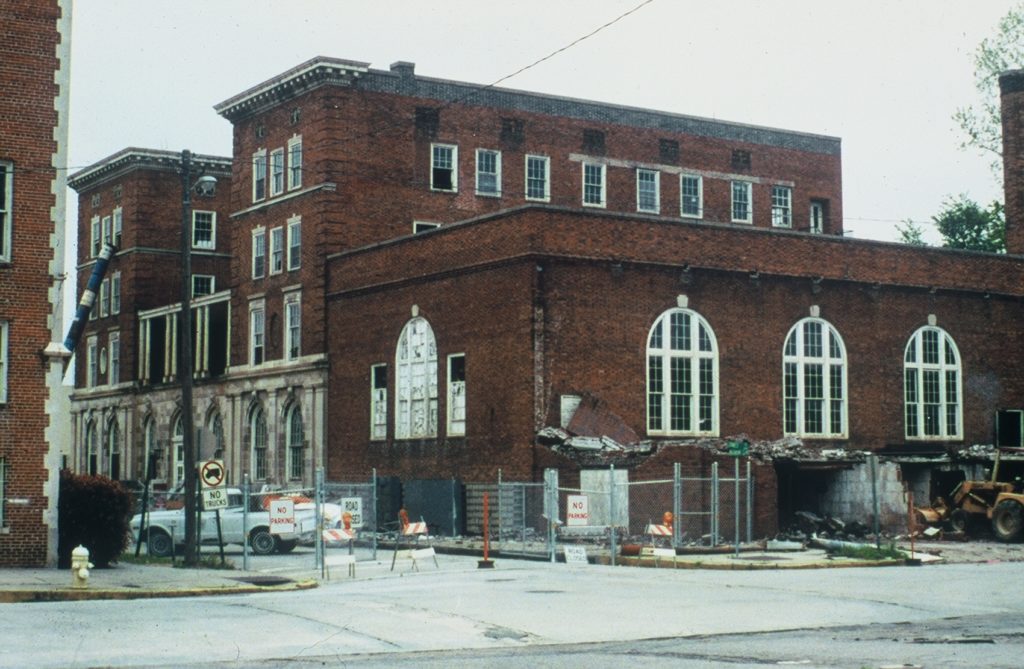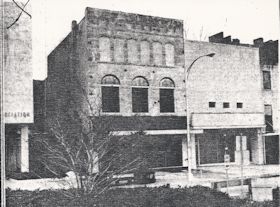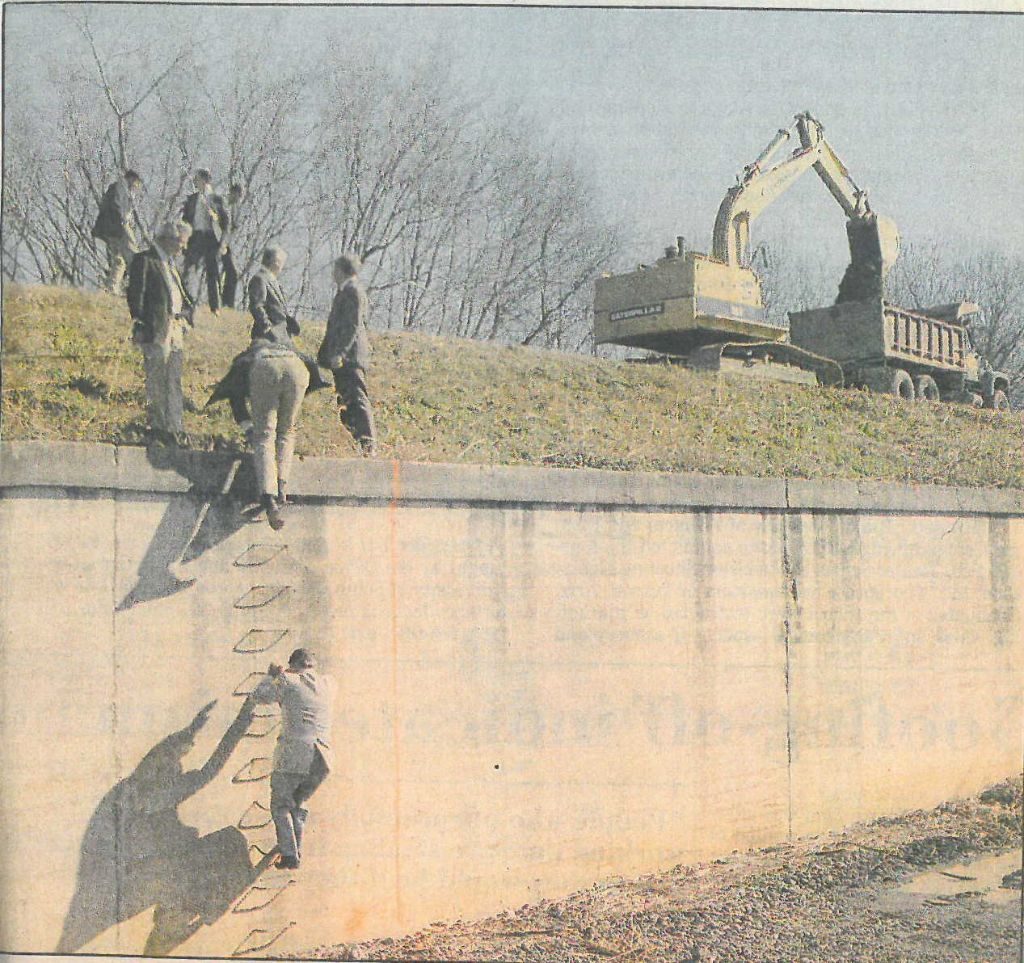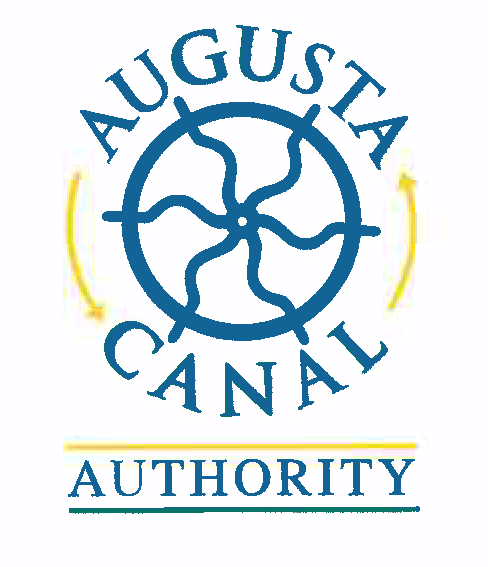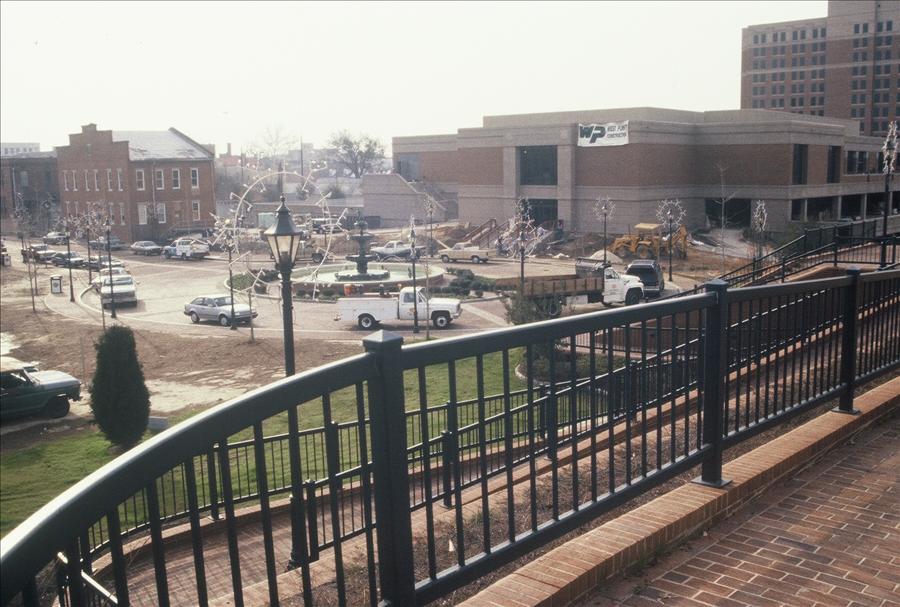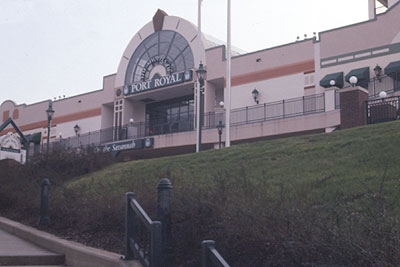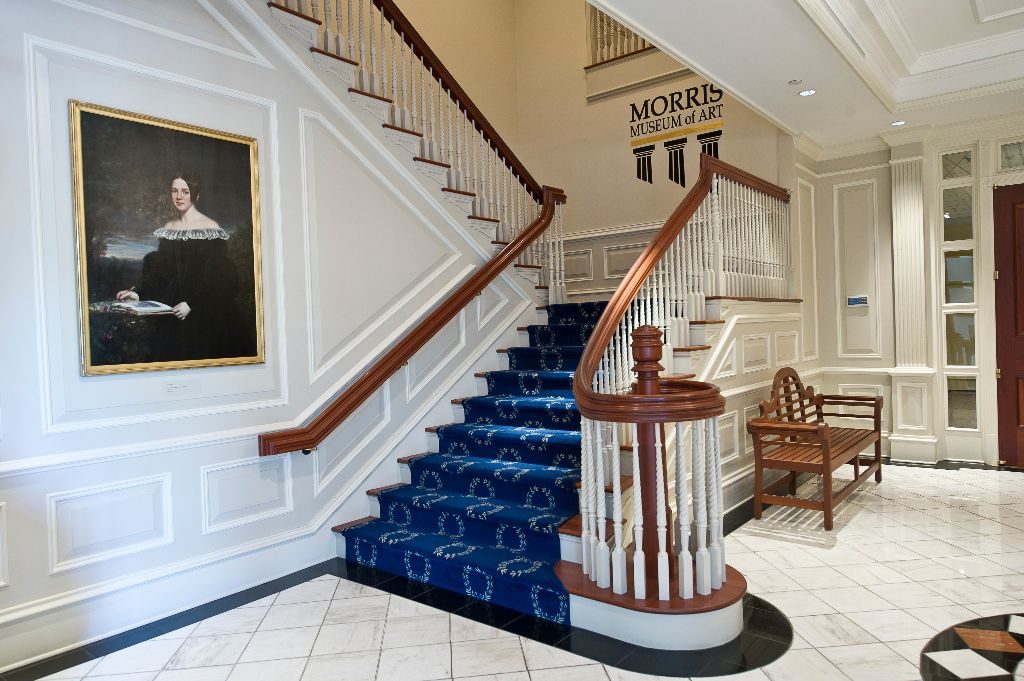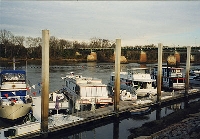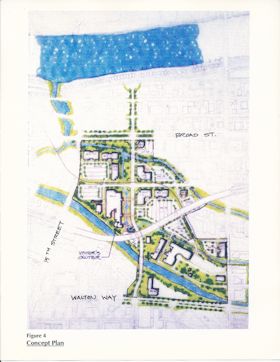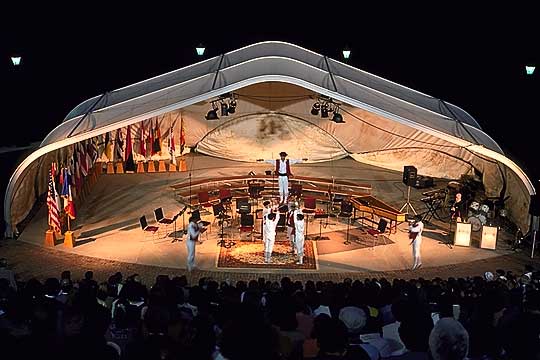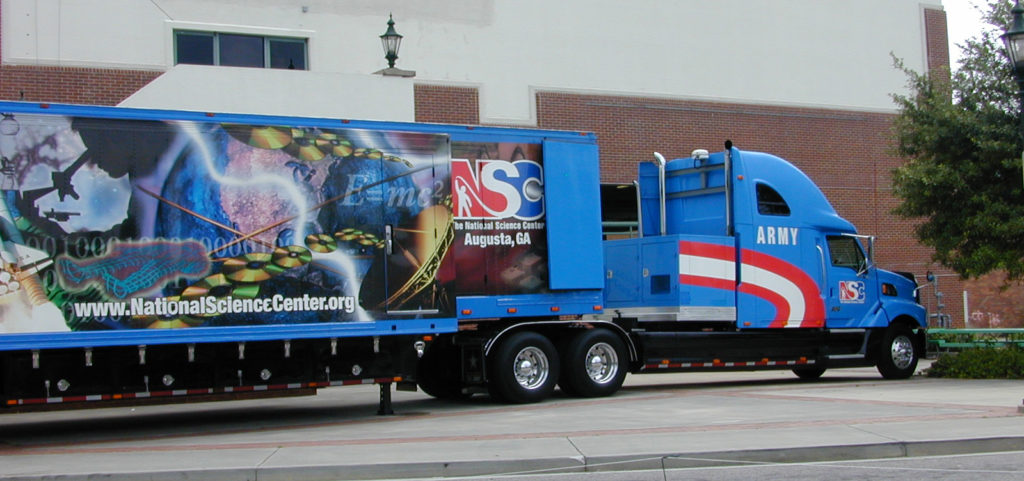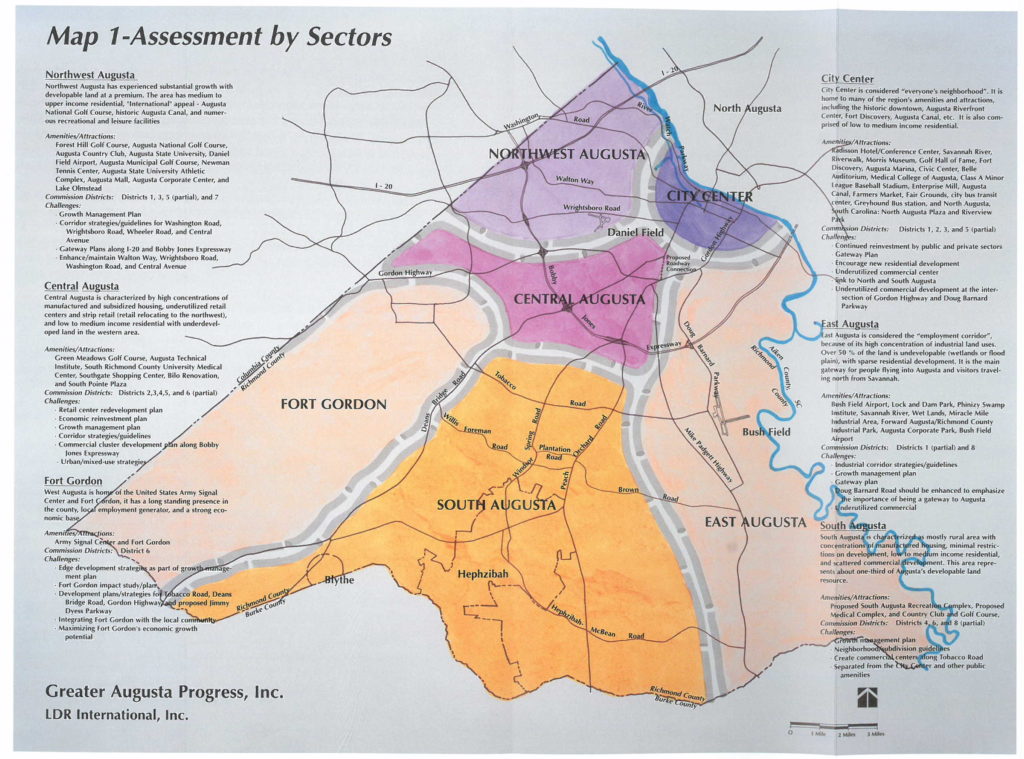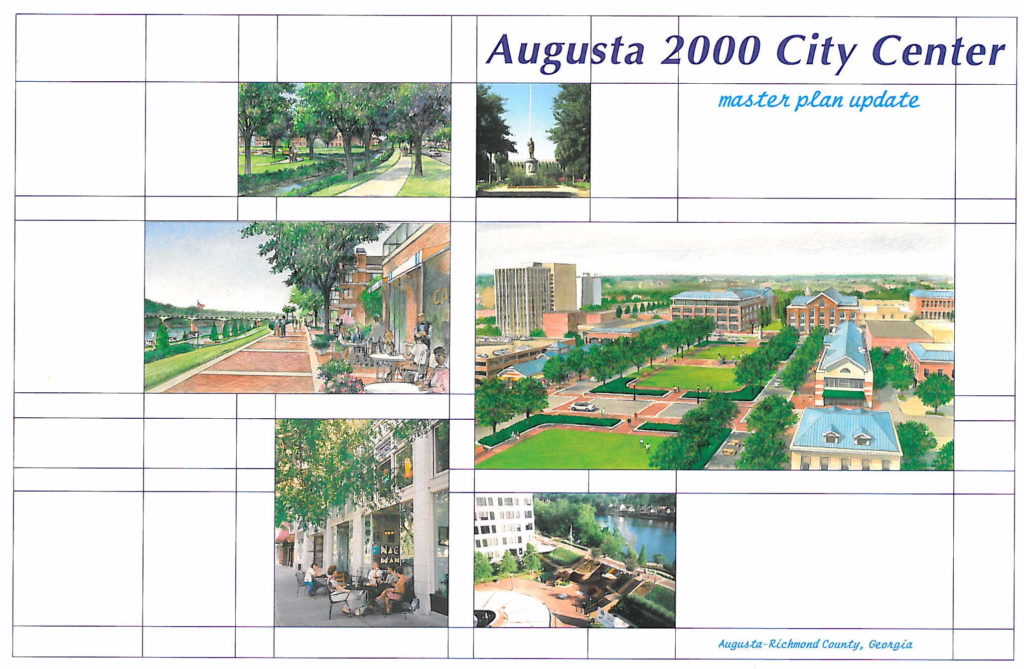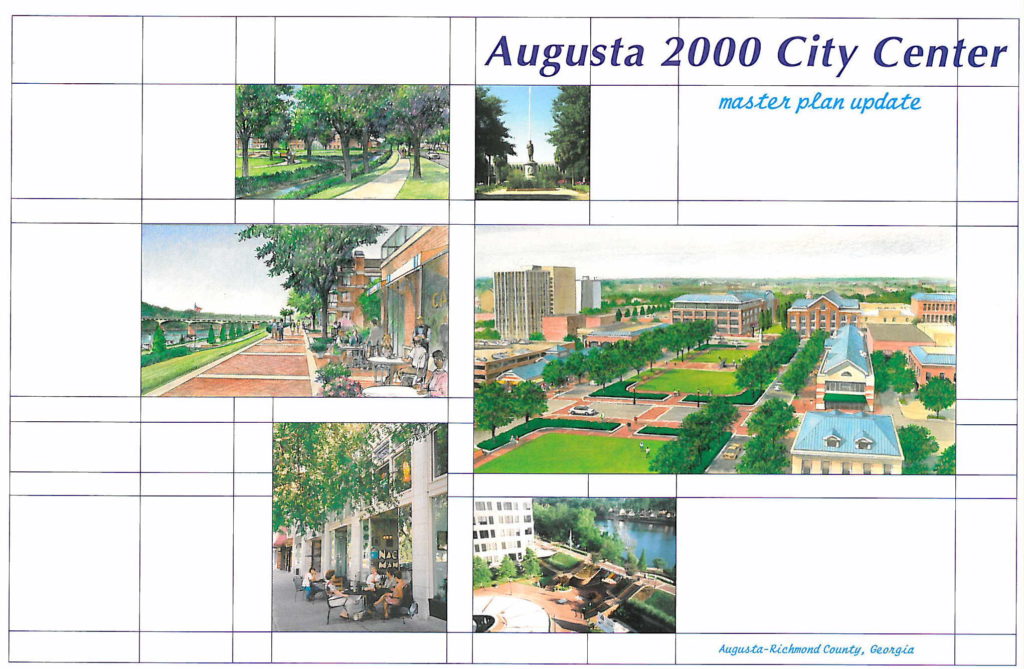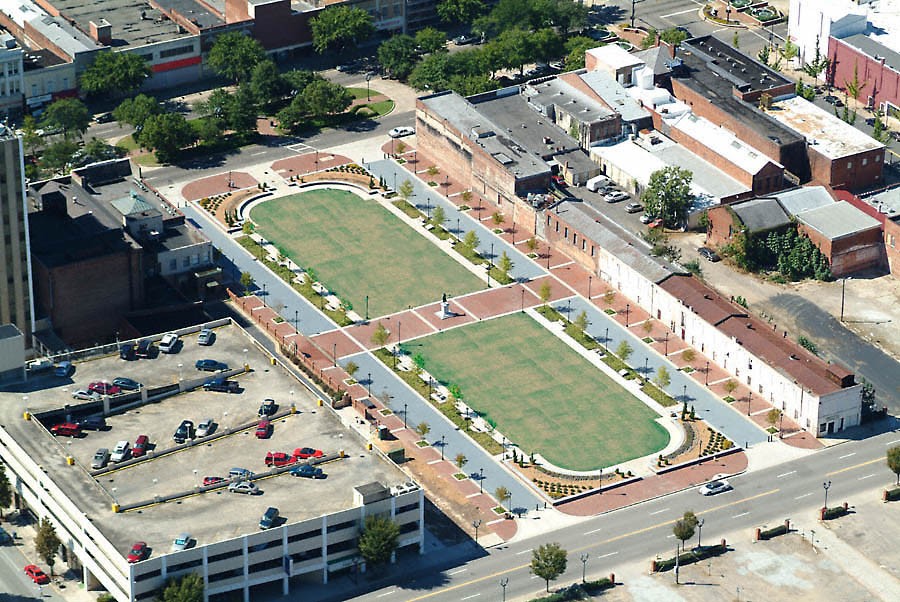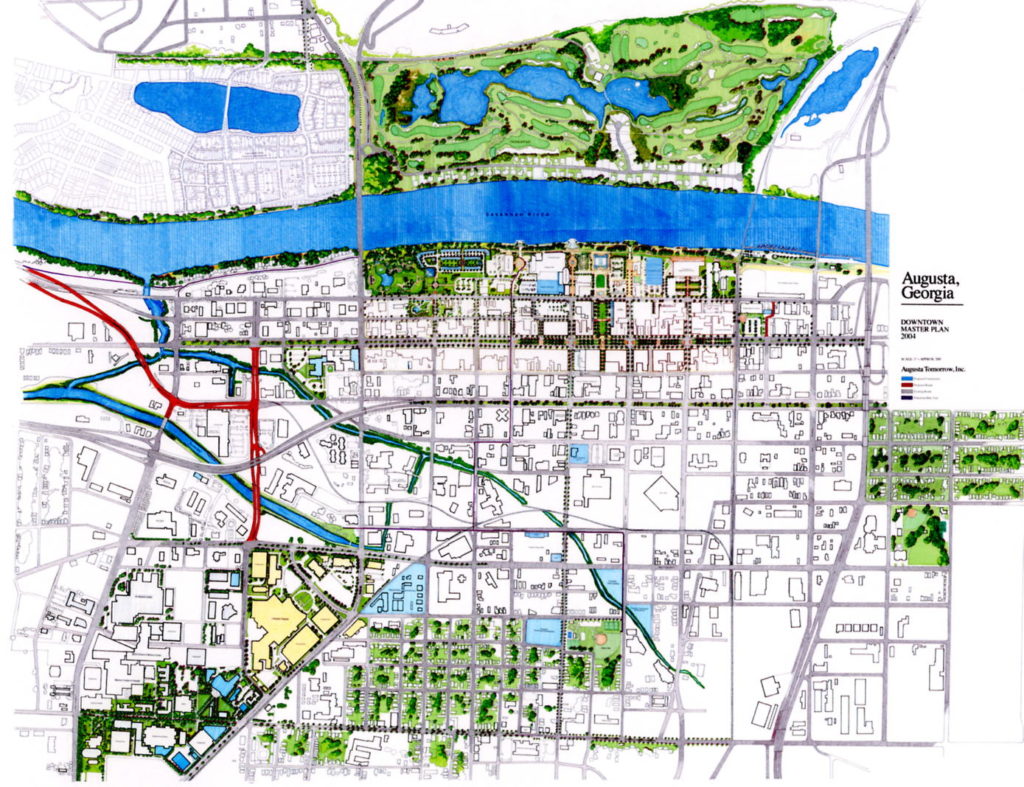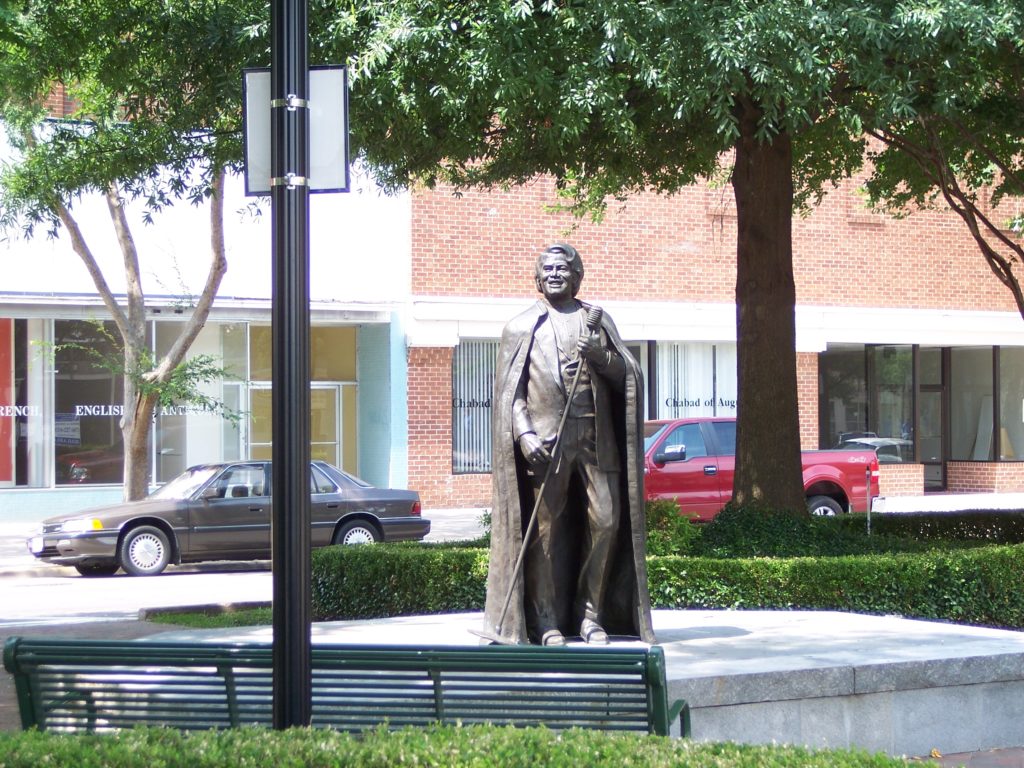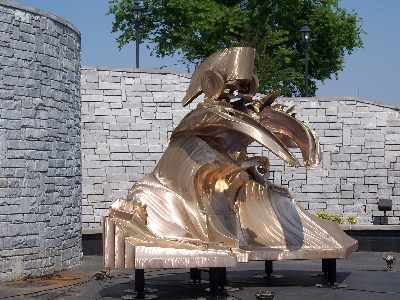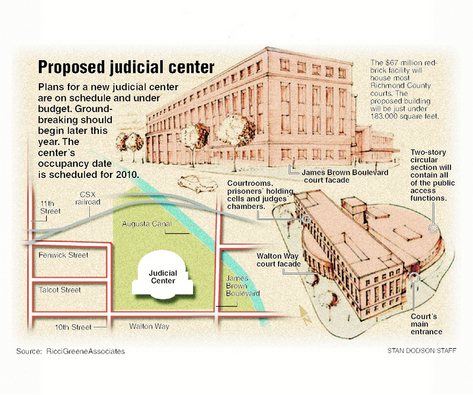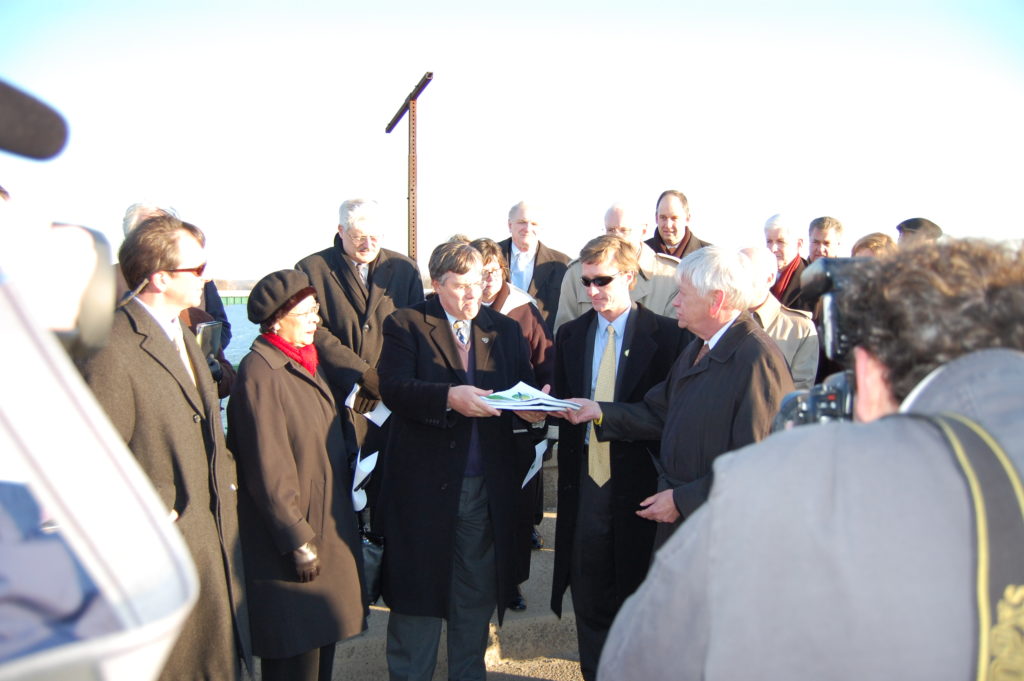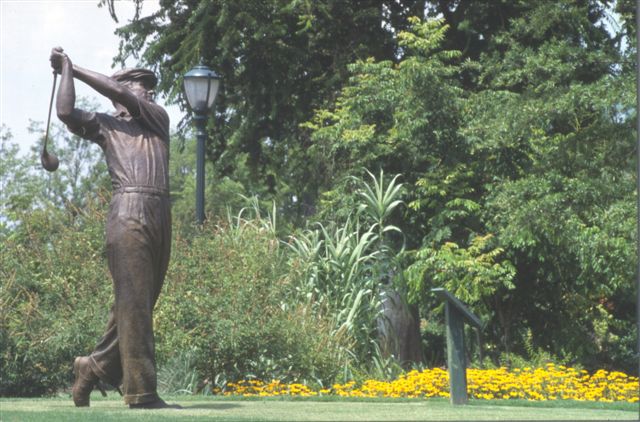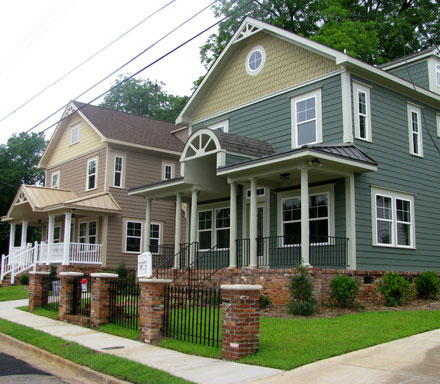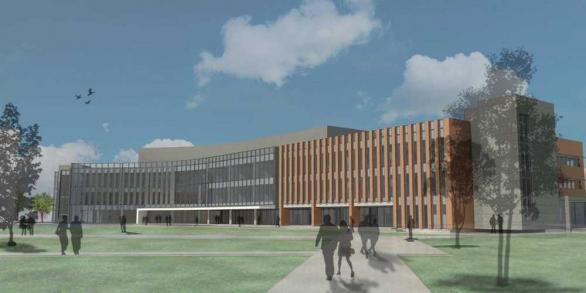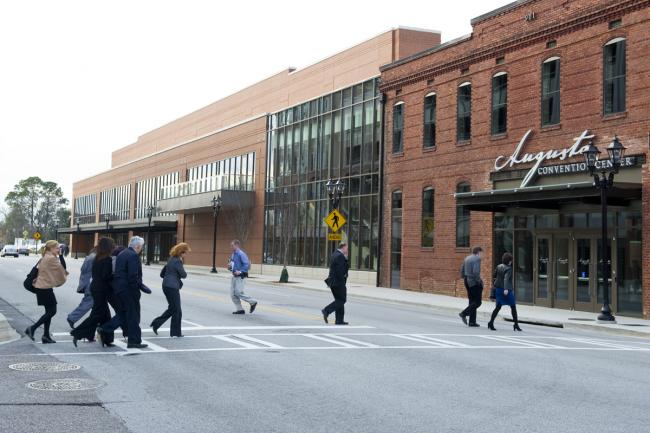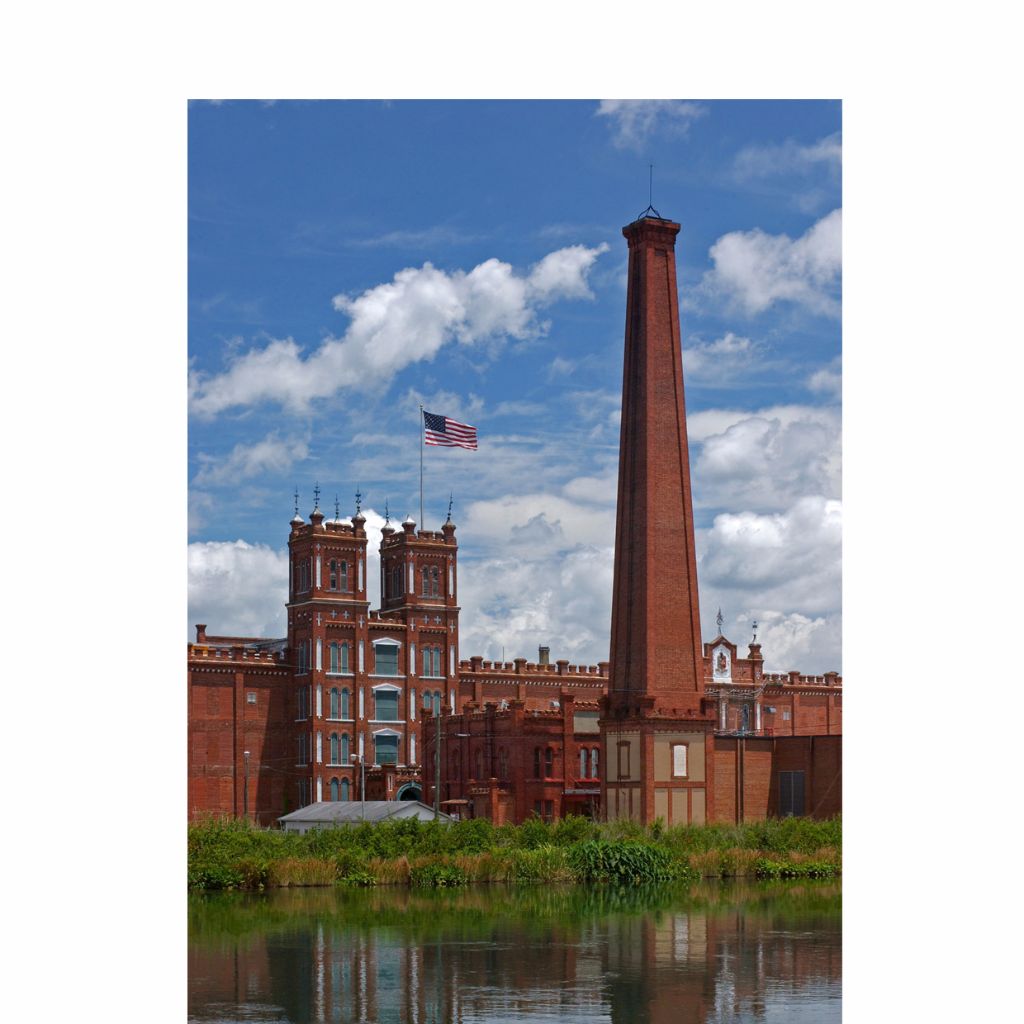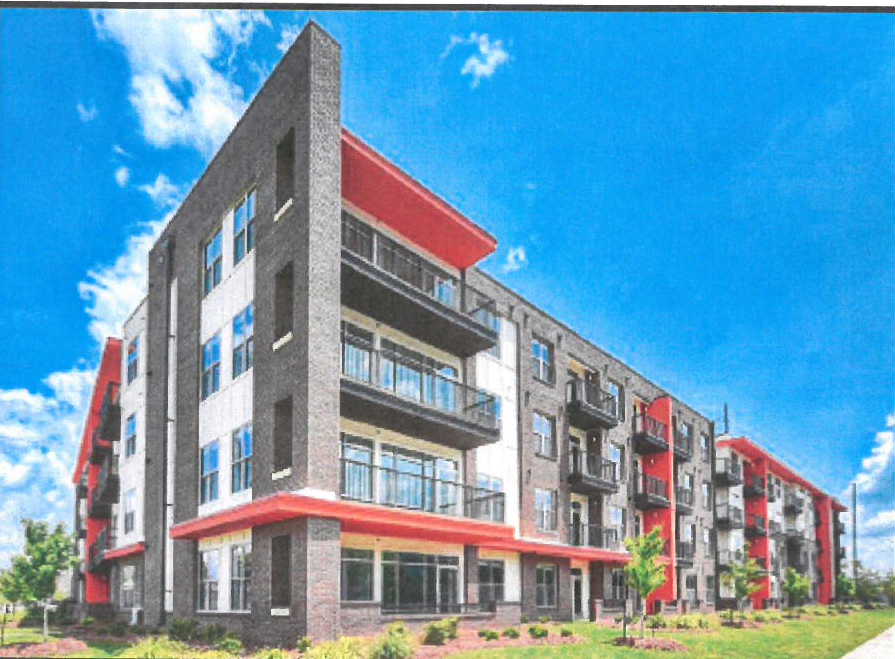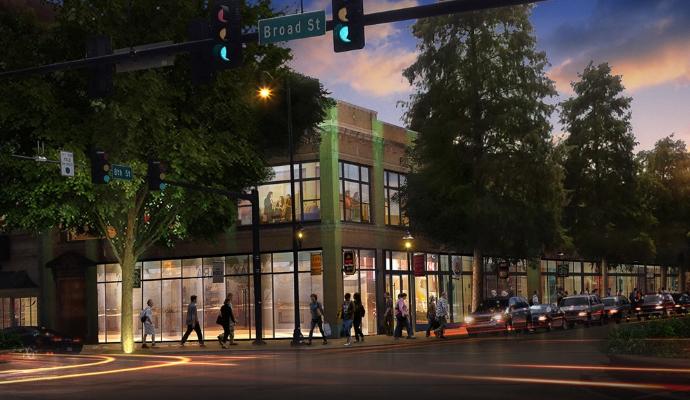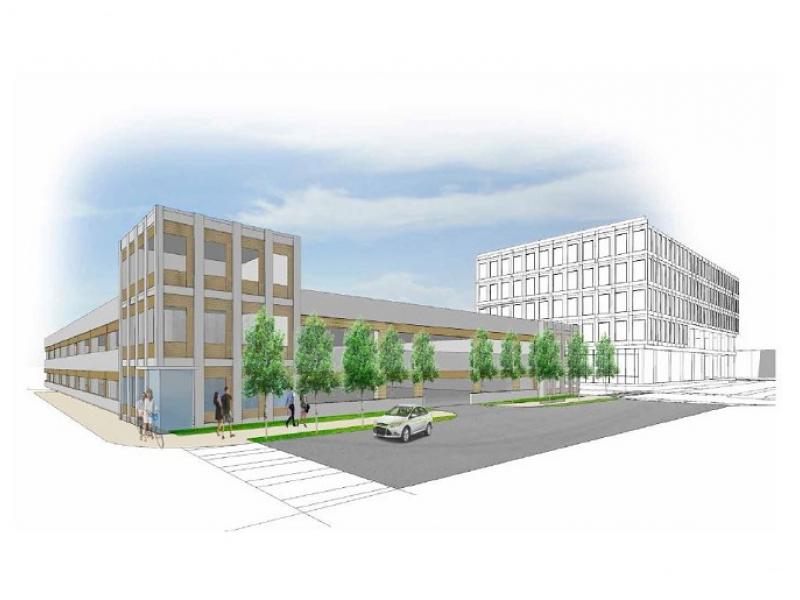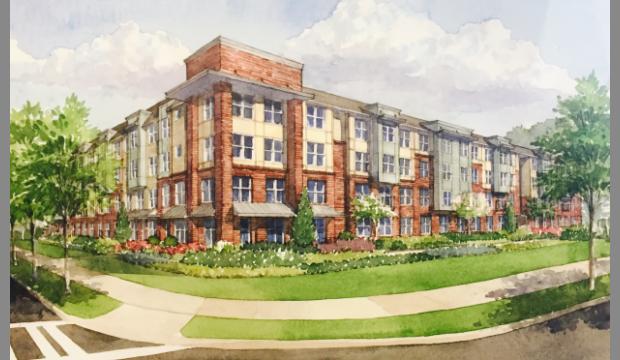Welcome to Augusta Tomorrow’s history. To put the Augusta Tomorrow history in perspective, it is important to provide milestones of Augusta’s economic development before Augusta Tomorrow was incorporated in 1982. Therefore, this history begins in the 1800s. Augusta’s present downtown revitalization effort is one of many in the City’s long history. A notable early example was the response to the City’s economic slump in the 1830s – building the Augusta Canal System. In the 1950s, the automobile allowed for great mobility and Augusta, like many cities in the United States, saw a migration to the suburbs. In the 1970s, internationally known architect I. M. Pei was hired to spearhead downtown revitalization and to draw people back downtown. In the 1980s and 1990s, other Master Plans were developed. The 1982 plan focused on breaching the Augusta levee and bringing development to the riverfront. Subsequent plans worked on bringing the riverfront energy to Augusta’s main streets. The most recent master plan, the 2009 The Westobou Vision, for the first time included the City of North Augusta and proposed many wide-sweeping projects that are being actively developed today.

Our History
VIEW THE TIMELINE
1800-1899
Augusta’s present downtown revitalization effort is one of many in the City’s long history. A notable earlier example was the response to the City’s economic slump in the 1830s. The solution – vastly successful – was the creation of the Augusta Canal System.
The Augusta Canal system was built in 1845 and enlarged in 1875. This solution drew manufacturing such as saw mills, grist mills, textile mills (the big industry in Augusta until World War II) and ironwork factories to this new and substantial source of power generation – water. Therefore, this period in Augusta’s history saw the rise of mills along the Augusta Canal and the prosperity of manufacturing.
1800-1899

THE AUGUSTA COTTON EXCHANGE WAS ORGANIZED
1872: The Augusta Cotton Exchange was organized.
1886 : The Augusta Cotton Exchange building was built. It was modeled after the cotton exchange in New York City, and served as the headquarters for Augusta’s bustling cotton trade.
THE RIVERS AND HARBORS APPROPRIATION ACT OF 1899
The Rivers and Harbors Appropriation Act of 1899 put into law the construction, repair and preservation of certain public works on rivers and harbors including levees. Section 14 of that Act made it unlawful to build upon, alter, deface, destroy, move, injure or obstruct any sea wall, bulkhead, jetty, dike, levee, wharf, pier, or other work built by the United States.
This law was in effect when the City of Augusta constructed a levee on the Savannah River after the 1908 flood.
(An act of congress was required before the Army Corps of Engineers would allow Augusta to breech the levee. The final approval to breach the levee occurred on November 5,1985.)
1900-1975
This period in Augusta’s history saw tremendous change. Not only was the Augusta Levee built and then raised to a higher level, Augusta won a bid for an army camp as World War II commenced. The automobile led to mobility and migration to the suburbs and a revitalization effort commenced with the hiring of internationally acclaimed architect I.M. Pei.
The emergence of the automobile during this time frame made a huge impact on downtown Augusta.
1900-1975

FLOOD DAMAGE
The flood of 1908 was devastating for downtown Augusta, and was the impetus for the City of Augusta to build a levee on the Savannah River as protection from future flooding.
AUGUSTA LEVEE BUILT
As a response to the 1908 flood, the City of Augusta constructed a levee that was completed between 1914 – 1916.
AUGUSTA TO SAVANNAH HIGHWAY PROPOSED – BELL
1930-1939 : The New Deal funded projects in Augusta through the Works Project Administration (WPA) program. Some of these projects included Augusta Canal repair, paving of Wrightsboro Road and Walton Way, building the Olmstead Homes and Sunset Homes (Augusta’s first public housing projects), and the Bell Auditorium on Telfair Street. The Bell Auditorium was constructed with $170,000 supplied by the WPA and $200,000 from a bond issue.
A massive flood in 1929 broke through the levee. In the 1930s, the City of Augusta requested federal funds to raise and strengthen the levee to its current level.
1938 : In early attempts to provide a direct highway link between Augusta and Savannah, federal and state agencies conducted a study which officials hoped would lead to the development of a roadway to be called the Oglethorpe Trail. This roadway would roughly parallel the Savannah River and be a scenic highway link between the two cities. Groups from Augusta and Savannah formed the Oglethorpe National Trail and Parkway Association. The Association successfully petitioned Congress to fund a $25,000 study of the project through the National Park Service. However, after the study approval, but before work was started, the project was halted due to World War II.
1939 : Augusta won a bid for an army camp as World War II commenced.
CAMP GORDON – AUGUSTA LEVEE RAISED – FORT GORDON
1941: The Augusta levee was raised in height to 30 feet pursuant to the Flood Control Act of 1936.
6/30/1941: A resolution adopted by the combined governments of the City of Augusta and Richmond County obligated the governments to operate and maintain the levee.
1942: An army camp was constructed on Tobacco Road. In September 1942, the camp became known as Camp Gordon and, in October 1942, the “Rolling Fourth” division arrived. At the New Savannah end of Tobacco Road an airfield for the training of army pilots was constructed and given the name of an instructor, Donald C. Bush, who was killed in a training crash.
1950s: The automobile accompanied by an era of cheap energy brought immense change to the downtown. Mobility led to migration to the suburbs. Stores followed the automobile. Daniel Village and Southgate Plaza opened in the west and south suburbs.
1953: The increasing importance of the automobile was illustrated by the Gordon Highway controversy. State and federal authorities decided that a new highway, Gordon Highway, should cross Augusta between 4th and 5th Streets. That was the very oldest part of Augusta, part of Oglethorpe’s original forty lots. After much contention, a vote approving this new highway location was held in October 1955.
3/21/1956: Upon receiving permanent status, Camp Gordon was renamed Fort Gordon.
EARLY DOWNTOWN REVITALIZATION EFFORTS
A revitalization effort occurred to try and stem downtown deterioration as more and more residents, retail and revenue moved to the suburbs. Like cities elsewhere, Augusta was feeling the impact of mid-century access to automobiles that made open-spaced suburbs very accessible. In November 1973, seventeen civic leaders including then Mayor Lewis A. Newman agreed to organize revitalization efforts. State Senator Eugene Holley made the first financial pledge for this new Revitalization Plan. A special tax district was created in the revitalization area to generate $1 million from the private sector to be matched with $1 million in Federal revenue-sharing money pledged by local government. The proposed plan and model for the city’s new downtown were unveiled in September 1974. The proposal encompassed 17 acres, and was funded in part by the $2 million. Three goals were outlined for this plan:
- To improve traffic circulation – for people and vehicles.
- To provide efficient & convenient downtown parking.
- To create an exciting physical environment.
UNION STATION CLOSED IN 1968
7/18/1968 – A Central Business District Study Committee adopted a $54 million three-stage revitalization plan to transform downtown Augusta into “a city unique to the nation.” This plan proposed developing a new civic auditorium, a river convention center, a monument mall on the 500 block of Broad Street, a cultural center along the levee, waterfront housing and a waterfront park.
By December 1969, the Central Business District Study Committee had only one member, and none of the 1968 plans were implemented.
I. M. PEI’S REVITALIZATION PLAN
4/1974: Internationally known architect I. M. Pei was hired by persons interested in the revitalization of downtown and spearheaded by the Downtown Council of the Greater Augusta Chamber of Commerce. Pei’s $40,000 contract called for a development program to bridge the 1968 revitalization study. Pei concentrated on parking and beautification of downtown Augusta.
9/17/1974: Pei’s $4 million proposed plan was announced to community leaders and interested citizens. Highlights of the plan were:
- The Chamber of Commerce Building – Dubbed by Pei “The Chamber Pavilion” to be a gateway into downtown and was aligned with the Coliseum/Civic Center also under design by the Pei architectural firm of Pei, Cobb, Freed & Partners Architects, LLP.
- Bicentennial Park – This half-acre park, located in the median of Broad Street in the 700 block, was Broad Street’s first green space.
- Retail Pavilions – 8th Street to 10th Street – Retail pavilions were planned for the center of these blocks, with each building consisting of modules similar to the Chamber of Commerce Pavilion. Their flexible design would allow space for retail, restaurants, cafes, small boutiques and specialty shops.
- Parking – 6th Street to 10th Street – Unique parking was proposed in these blocks to help define Augusta’s 168 foot-wide Broad Street – one of North America’s widest streets. Noting that its width is “exceptional and unique,” architect Pei observed: “It is not at all like other downtown main streets that have been closed and made into malls. Broad Street must continue as a street for cars, but at the same time it should provide the festivity, excitement and environmental amenity which a mall affords. Clearly the solution, like the street itself, must be unique.” The parking plan included:
- Changing traffic lanes from three to two on Broad Street from 6th Street to 10th Street and adding parallel parking.
- A new two-level parking deck on Ellis Street at 9th
- An innovative system developed by Travers Associates, the project’s traffic consultants. The system utilized a modification of “paired parking,” in which a short no-parking area between two spaces would enable in-out movement with no on-street maneuvering.
- Parking within the median zone would be depressed. Low planting boxes would conceal cars and parking meters from sidewalk view.
The landscape architectural firm of Roger W. Davis & Associates and Holroyd and Johnson, Architects, both of Augusta, Georgia joined Pei to develop the landscape plan and detailed design of the project block by block moving west up the median of Broad Street from 6th Street to 10th Street.
GROUNDBREAKING FOR 1974 REVITAILIZATION PLAN
City of Augusta funded and appointed a Downtown Revitalization Commission, headed by David T. Peet, who had been chairman of the Chamber’s Downtown Council.
August 1975: Groundbreaking for the 1974 revitalization plan. Work was initiated on building the Chamber of Commerce structure as well as the depressed parking in the 600 to 700 blocks of Broad Street.
AUGUSTA TO SAVANNAH HIGHWAY SHELVED
Another of many attempts was made to build a road from Augusta to Savannah. Thomas F. Allgood, Bill English and Charles Wessels authored a resolution in the Georgia Senate seeking a Department of Transportation study of the traffic corridor between Augusta and Savannah. After some study, the project was shelved.
LAFAYETTE CENTER GROUNDBREAKING
8/6/1984: The City of Augusta executed an agreement with the Department of Natural Resources in the amount of $35,000 for the first phase development of the 1.2 acre Bay Street Esplanade Project (renamed Riverwalk Project) and the golf exhibition.
8/15/1984: Contractual relationship with American City Corporation terminated after several months of technical and professional consulting services to Augusta Tomorrow, Inc. and the City of Augusta advising on the organizational and administrative steps necessary to enable Augusta Tomorrow, Inc. to carry out the development program. On this transition date, Augusta Tomorrow, Inc. assumed full responsibility for the implementation work previously handled by American City Corporation. The initial contracts with American City Corporation were necessary and productive, but they were also expensive to maintain.
10/15/1984: Augusta Tomorrow entered into an agreement with the City of Augusta to prepare and administer a Riverwalk feasibility study and plans for a golf exhibition. The $35,000 for this study was granted by the Office of the Governor and channeled to the City through the Department of Natural Resources of the State of Georgia.
10/18/1984: Augusta Tomorrow opened its own office with staff to continue implementation of downtown improvements. The office was open part-time for the remainder of the year and then full-time thereafter. The office was located in the Trust Company Bank building and remained jointly funded by the eleven private members of Augusta Tomorrow and the City of Augusta.
11/5/1984-12/31/1984: City of Augusta formally contracted with Augusta Tomorrow, Inc. to assist in implementing the Downtown Development Plan. With this agreement, Augusta Tomorrow, Inc. agreed to: provide staff services (both administrative and clerical) for the Augusta Port Authority, to assist the City in implementing the Downtown Development Plan as prepared by the American City Corporation and assist in the preparation of financial packages and Urban Development Action Grant (UDAG) applications.
11/9/1984: A ceremony for the groundbreaking for Lafayette Center was held. At the groundbreaking federal HUD funding for this project was presented to the Mayor. Augusta Tomorrow board members were promoters, developers and investors in this master plan project. The project was called the Bankers First Project before being renamed Lafayette Center.
1976-1984
Although slowly declining since the early 1970s, downtown Augusta had remained the retail, cultural, banking, professional and social heart of the Augusta urban area. All of that dramatically changed after the opening of Regency Mall and Augusta Mall within a week of each other in 1978. With an excess of two million square feet of retail space between them and over 3000 jobs, the impact to downtown Augusta hit fairly suddenly with the debilitating effect of both major and smaller retailers and related services moving to or near the mall locations. Boarded-up storefronts and vacant buildings soon dominated the downtown shopping area.
The consequences to downtown Augusta were, as with other cities before it, predictable: declines in property values and in the City’s tax base, declines in patronage of those merchants and other businesses that remained downtown, and a markedly decreased utilization of property and existing infrastructure (infrastructure such as streets built and maintained by the City and electrical, gas and telephone service built and maintained by the utility companies). Overall, a significant reduction in activity was accompanied by a growing deterioration not only in property use but in civic attitude and hope for the future of downtown Augusta.
The malls and suburban growth phenomenon, while certainly not unique to Augusta, nevertheless occurred comparatively late in Augusta compared to the rest of the United States. The first mall opened in 1952 in Michigan. However, when it happened in Augusta, the consequences to the central city were comparable to those experienced by other American cities in the years between the end of World War II and the mid-1950s.
Augusta was fortunate to have a forward thinking mayor (Edward M. McIntyre) and businessmen who envisioned the city’s revitalization. Discussions for Augusta’s revitalization began in the late 1970s and took a positive turn with the incorporation of Augusta Tomorrow in 1982 and a new downtown revitalization Master Plan unveiled in 1982.
1976-1984

OLD AUGUSTA METRO CHAMBER OF COMMERCE
The Chamber of Commerce moved into the new I.M. Pei designed modular structure built in the center median of the 600 block of Broad Street.
AUGUSTA CIVIC CENTER
12/1979: Augusta Civic Center, later named the James Brown Arena, designed by Pei, opened its doors.
PRE-AUGUSTA TOMORROW CONVERSATIONS
Augusta business leaders H. Monty Osteen, Jr., president of Bankers First (formerly First Federal & Loan Association) and D. Hugh Connolly, president of Sherman & Hemstreet Realtors were both concerned about the deterioration of downtown Augusta and whether a downtown was really necessary for the long-term economic viability of a city like Augusta. These two gentlemen became the nucleus of the Augusta Tomorrow organization. They spoke with other businessmen who were also concerned about downtown’s deterioration. The following questions were asked of local and national economists and urban experts:
- Was it important for the community to have a viable central city, a traditional downtown, from an economic standpoint? Was the problem of decline as great as what was thought and what should be done with abandoned buildings? From conversations with urban experts and economists throughout the country, it became clear that it was critical to the well-being of the city to have an economically vibrant downtown. A deteriorated economically declining downtown served only to contaminate the rest of the community in economic, aesthetic and psychological terms. The community is best served when it is healthy throughout.
- Would the historic preservation efforts and Historic Augusta alone achieve the degree of revitalization necessary to reverse the central city’s decline effectively and lastingly? The answer was “no;” complex issues were involved which had to be dealt with through the application of manifold resources, public and private, focused directly on the various causes of the problem, even though preservation and restoration would remain an important part of the process.
Early 1980s: During a realty conference in Savannah, Georgia, Connolly had a chance meeting with George M. Brady, Jr., a member of The Rouse Company’s board of directors. Brady suggested to Connolly a meeting with Leo Molinero to discuss Augusta’s potential for revitalization. Molinero was president of American City Corporation of Columbia, Maryland and a wholly-owned subsidiary of The Rouse Company.
REVITALIZATION PLATFORMS IN MAYORAL RACE
Downtown revitalization was a major issue in the mayoral campaign during the fall of 1981. At least three candidates had revitalization planks in their platforms, including Edward M. McIntyre. The candidates understood that Augusta needed a mayor and city leadership that embraced downtown revitalization. McIntyre was subsequently elected Mayor of Augusta.
The group of businessmen concerned with downtown Augusta’s deterioration had met with all the mayoral candidates prior to the election, paving the way for cooperation following the election.
DOWNTOWN MASTER PLAN – AUGUSTA TOMORROW
3/22/1982: The City of Augusta partnered with “Augusta Tomorrow” (then still a group of community leaders) and commissioned the American City Corporation, to conduct a six-month study of the entire downtown area and the riverfront and produce a viable plan for its redevelopment. The $120,000 fee was paid ½ by the City of Augusta and ½ wholly by the individual members of Augusta Tomorrow.
9/22/1982: American City Corporation presented its $116 million plan, A Strategy for Downtown Development, to the City of Augusta and Augusta Tomorrow for downtown revitalization. The American City Corporation planners had studied all aspects of the city and found room for expansion and promotion of a medical complex, tourist attractions, historical sites and an economic base. But they also found problems – a downtown suffering from an image problem, little attempt to promote tourism, an inadequate effort to seek non-industrial businesses and too few convention facilities.
Two Conditions Precedent to Implementing the 1982 Master Plan – None of the initial master plan initiatives on the Savannah River could have happened without first satisfying two essential conditions – amending the federal 1899 Rivers and Harbors Act in order to breach the levee and removing the railroad tracks from the south side of the levee.
11/5/1982: Augusta Tomorrow incorporated as a non-profit, public and private sector organization designed to act as a catalyst for downtown development.
12/20/1982: Augusta Tomorrow jointly with the City of Augusta signed a contract with American City Corporation to implement the $116 million revitalization effort for downtown Augusta. The contract retained American City Corporation on behalf of Augusta City Council and Augusta Tomorrow, Inc. for implementation of the first phase of projects called for by the Master Plan. The one-year contract fee of $240,000 was paid ½ by the City of Augusta and ½ by the members of Augusta Tomorrow, Inc. Initial efforts concentrated on riverfront improvements to capitalize on the river as an amenity for all kinds of development.
BEGINNING RENOVATION/RR TRACK RELOCATION
1/27/1983: Augusta Tomorrow board members (Louis Battey, MD, Connolly, O’Keefe and Skinner), representatives of Mayor McIntyre’s office and state Rep. Jack Connell along with Savannah business and political leaders met in Atlanta with the Georgia Department of Transportation Commissioner Tom Moreland to start discussions of a highway connecting Augusta and Savannah.
3/18/1983: The first step toward implementation of the 1982 long-range downtown Master Plan was announced by Bankers First Federal Savings and Loan with the sale and $1 million renovation of 791 and 793 Broad Street, part of the overall plan for the renovation of the entire Bankers First block that included the YMCA building. Augusta Tomorrow board members were the prominent promoters, investors and developers of this project initially called the Bankers First Project. The project was later named Lafayette Center.
3/31/1983: Augusta City Council voted to spend $848,000 in federal community development funds for riverfront improvements including land acquisition for an international golf exposition.
4/18/1983: City of Augusta adopted a formal ordinance that the Downtown Augusta Master Plan prepared for the City of Augusta and Augusta Tomorrow, Inc. by American City Corporation become the official development program for the downtown area of the City of Augusta.
4/20-21/1983: Augusta Tomorrow hosted the monthly meeting of the Georgia Department of Transportation in Augusta, the first one held in Augusta in nine years. One of the topics discussed was moving forward on a new Augusta to Savannah Highway.
6/7/1983: Seaboard System Railroad approved railroad track relocation away from the Savannah River levee.
LAFAYETTE CENTER GROUNDBREAKING
8/6/1984: The City of Augusta executed an agreement with the Department of Natural Resources in the amount of $35,000 for the first phase development of the 1.2 acre Bay Street Esplanade Project (renamed Riverwalk Project) and the golf exhibition.
8/15/1984: Contractual relationship with American City Corporation terminated after several months of technical and professional consulting services to Augusta Tomorrow, Inc. and the City of Augusta advising on the organizational and administrative steps necessary to enable Augusta Tomorrow, Inc. to carry out the development program. On this transition date, Augusta Tomorrow, Inc. assumed full responsibility for the implementation work previously handled by American City Corporation. The initial contracts with American City Corporation were necessary and productive, but they were also expensive to maintain.
10/15/1984: Augusta Tomorrow entered into an agreement with the City of Augusta to prepare and administer a Riverwalk feasibility study and plans for a golf exhibition. The $35,000 for this study was granted by the Office of the Governor and channeled to the City through the Department of Natural Resources of the State of Georgia.
10/18/1984: Augusta Tomorrow opened its own office with staff to continue implementation of downtown improvements. The office was open part-time for the remainder of the year and then full-time thereafter. The office was located in the Trust Company Bank building and remained jointly funded by the eleven private members of Augusta Tomorrow and the City of Augusta.
11/5/1984-12/31/1984: City of Augusta formally contracted with Augusta Tomorrow, Inc. to assist in implementing the Downtown Development Plan. With this agreement, Augusta Tomorrow, Inc. agreed to: provide staff services (both administrative and clerical) for the Augusta Port Authority, to assist the City in implementing the Downtown Development Plan as prepared by the American City Corporation and assist in the preparation of financial packages and Urban Development Action Grant (UDAG) applications.
11/9/1984: A ceremony for the groundbreaking for Lafayette Center was held. At the groundbreaking federal HUD funding for this project was presented to the Mayor. Augusta Tomorrow board members were promoters, developers and investors in this master plan project. The project was called the Bankers First Project before being renamed Lafayette Center.
1985-1992
Highlights of 1985-1992 : The years 1985 – 1992 produced many Master Plan accomplishments including:
• Historic Breaching of the Augusta Levee accomplished
• Lafayette Center completed and dedicated
• Riverwalk Phase I completed
• Construction on the Riverwalk Amphitheater started
• Port Royal finished
• Radisson Riverfront Hotel and Augusta Riverfront Convention Center opened
• Railroad tracks officially abandoned on the Augusta levee by Seaboard System Railroad
• Augusta Canal Authority was created by the Georgia Legislature
• Morris Museum of Art opened
1985-1992

ARMY CORPS APPROVES LEVEE BREACH
3/1985: Final design for the riverfront and levee was completed and hand delivered to the Army Corps of Engineers for review and approval.
5/25/1985: Georgia Department of Natural Resources authorized the City of Augusta to breach the levee.
5/30/1985: Augusta Tomorrow, Inc. purchased the Cotton Exchange to protect it from acquisition by unprincipled speculators who might not direct its utilization toward involvement in downtown revitalization. The purchase and carrying expenses were borne solely by Augusta Tomorrow, Inc. members for the next 3 years.
9/15/1985: Seaboard System Railroad officially abandoned the railroad tracks along the levee.
10/30/1985: Augusta Tomorrow members met with their counterparts in Savannah to seek active support of the proposed Augusta/Savannah highway.
11/5/1985: U.S. Army Corps of Engineers officially approved a cut in the Augusta levee.
1985: Parcels of land along the riverfront started being assembled for development of the Riverfront Center.
LAFAYETTE CTR. DEDICATED/RIVERWALK GRNDBREAKING
1986: Bankers First Bank with the City of Augusta investigated obtaining an Urban Development Action Grant (UDAG) from U.S. Housing and Urban Development (HUD) to help finance development of the Augusta Riverfront Center project.
1/21/1986: Augusta Tomorrow, Inc. held the dedication of the Lafayette Center, the name given to the restoration/renovation of the 900 block on Broad Street from 10th Street to McCartan Street. “When Lafayette visited Augusta in 1825, the city united in an incredible spirit of celebration. Our gala grand opening recalls that fun and memorable event. But more importantly, the revitalization signaled by Lafayette Center calls upon that historic Augusta spirit of unity and civic pride” said Osteen.
When the restoration project was finished, Bankers First anchored one end of the block at 10th and Broad Streets and the YMCA building (42,000 sq. ft. for corporate offices and 20,000 sq. ft. for a health club) anchored the other end of the block at McCartan and Broad Streets. In all, 5 historic buildings were totally remodeled including the oldest structure remaining on Broad Street.
Lafayette Center was the largest restoration project in the State of Georgia up to that point. The result was a $10 million historic rehabilitation project for downtown undertaken by Bankers First, a member of Augusta Tomorrow.
Due to the huge investment that they had made to renovate the Lafayette Center block in downtown Augusta, Bankers First was the recipient of a “Best Overall Project” award from The Georgia Trust for Historic Preservation for its work on the Lafayette Center project. As CEO of Bankers First, Osteen accepted the award. This marked the first large project of many in Augusta Tomorrow’s history.
2/7/1986: Riverwalk groundbreaking ceremony was held to initiate $3,450,000 in riverfront improvements. The blueprint, designed by Tom Robertson from the engineering firm of Cranston, Robertson and Whitehurst, included:
• Breach of the levee at 8th Street with emergency gate
• Two bulkheads in the Savannah River
• Construction of a brick walkway (esplanade) on top of the levee
• Construction of an overlook and 12 seating areas on the river side of the levee
• Construction of a pedestrian river walk with seating areas along the river
• Extensive landscaping and lighting
• Construction of interpretive plaques, directories, flags, etc.
• Reconstruction of Oglethorpe Park near the Southern Railroad bridge crossing.
7/30/1986: Due to major efforts by Representative Doug Barnard, the U.S. House of Representatives, recommended $4 million in Railroad-Highway Crossing projects be allocated to Augusta. This funding was for railroad relocation and grade separation projects.
8/5/1986: Mayor DeVaney wrote to Senators Sam A. Nunn and Mack Mattingly requesting support for passage of the $4 million railroad relocation and grade separation projects in the Senate.
AUGUSTA RIVERFRONT CENTER
1987 – East Boundary Street breach in levee.
11/3/1987: A $7.6 million UDAG Grant was approved. This grant was one of the funding sources used for the development of the Augusta Riverfront Center.
RIVERFRONT DEVELOPMENT – AUGUSTA CANAL AUTHORITY
5/4/1989: The City of Augusta and Augusta Tomorrow, Inc. held a groundbreaking for the second phase of riverfront development that included building an 1800-seat amphitheater (later named the Jessye Norman Amphitheater), continued building both the upper walkway (esplanade) atop the levee and the lower walkway to the amphitheater.
1989 – The Augusta Canal Authority was created by the Georgia Legislature. The Augusta Legislative Delegation proposed creating the Augusta Canal Authority and, largely through Representative Jack Connell’s management, resulted in the creation of the Augusta Canal Authority by the General Assembly. The legal cost for preparing the legislation was jointly shared by the City of Augusta and private members of Augusta Tomorrow, Inc.
AUGUSTA RIVERFRONT CENTER GROUNDBREAKING
5/24/1990: The City of Augusta and Augusta Tomorrow, Inc. held a groundbreaking ceremony for the Augusta Riverfront Center.
Augusta Riverfront Center Financing: The UDAG grant approval (11/3/1987) was only the first step in securing funding for the project. It took until 1990 for the financing to all come together. The country was going through one of its worst financial crises in the post war period and banks did not want to engage in commercial real estate loans.Bankers First was the largest equity investor with $5 million in the proposed $48 million Riverfront Center. Azalea Development Company (a firm affiliated with Morris Communications) invested the next largest amount of $4 million. The remaining $1 million of the funding was provided by Augusta Limited Partnership, a subsidiary of Bailey &Associates; Kuhlke Properties; Hull, Towill, Norman Barrett, an Augusta law firm; and Dr. Louis Battey, an Augusta physician.
The $10 million in private equity was all contributed by members of Augusta Tomorrow, Inc. with the primary equity investors being Bankers First and Azalea Development Company. The City of Augusta and members of Augusta Tomorrow also signed long-term leases for over 100,000 sq. ft. of space in the proposed office building. The first long-term lessees were all members of Augusta Tomorrow, Inc.: Bankers First, Dr. Louis Battey, City of Augusta, Georgia Power, Kuhlke Properties and Morris Communications.
Even with the $10 million in equity, the UDAG Grant and the long-term leases, the bank would not finance the project. At the time, the environment was very hostile for this type of project. At this point, William S. Morris III agreed to add financial strength to the project by personally guaranteeing the $17 million loan. This guarantee, along with the $10 million equity funding, the $7 million UDAG funding, and long-term lease signers ultimately satisfied the bank, and a $17.0 million loan was secured. Without the commitment from Morris, the project would not have become a reality.
As discussed previously, other major hurdles had to be eliminated by Augusta Tomorrow, Inc. before the project could become a reality. These included congressional legislation and intervention before the Corps of Engineers could approve the breach in the levee. Additionally, an agreement resulting from negotiations over a two-year period was reached with the Seaboard System Railroad to abandon and remove the railroad tracks adjacent to the levee going west from 6th to 15th Streets.
THE PORT ROYAL BUILDING
2/1991: Due to the substantial progress and momentum achieved on the riverfront improvements, the City and Augusta Tomorrow, Inc. shifted emphasis to other portions of the Master Plan including implementation of the proposed Penny Bank Neighborhood Commercial Center on Laney Walker Blvd. and various Broad Street projects.
3/14/1991: Port Royal, located at 7th Street on the Augusta Riverwalk, held a grand opening. This $36 million project was financed by French brothers Dr. Edouard J. Servy and Andre Servy and Yves Legros, president of Paris-based CEGEP, Inc., a commercial development company. Port Royal opened as a 14-floor condominium tower with 57 condominium units and a two-level 120,000 square foot mall that housed commercial, office and retail space. A two-level parking deck was also built under the structure. The Port Royal concept (mixed-use development) was provided for in the 1982 Master Plan as part of Riverwalk development. However, Port Royal was not an Augusta Tomorrow, Inc. project. It was a private endeavor totally separate from Augusta Tomorrow, Inc. and Augusta Tomorrow, Inc. was not consulted on any of the project
10/1991: Across the river in North Augusta, a Flood Elevation Determination revision proposed by the Federal Emergency Management Agency (FEMA) to modify the 100-year elevation base for North Augusta took almost all of the South Carolina riverfront property out of the flood plain. The city of North Augusta had requested a revision to the flood plain elevations, and FEMAs revisions opened the way to riverfront development.
11/6/1991: Augusta Tomorrow sent a letter to FEMA requesting a review of the Savannah River flood elevations for Augusta, Georgia as development was hindered by the 30-foot levee on the Savannah River. A reduction in the flood elevation levels would allow development along Augustas riverfront, as it did in North Augusta.
12/2/1991: FEMA denied request to revise the 100-year flood plain elevations for Augusta (just across the Savannah River from North Augusta) citing that the City of Augusta needed to pursue such designation with supporting scientific and technical data as a formal request to FEMA.
RIVERFRONT CENTER COMPLETED – LANEY WALKER
1/15/1992: Groundbreaking ceremonies were held for the Laney Walker Project, the Penny Savings Bank Neighborhood Commercial Center, on Laney Walker Blvd. The Laney Walker Project was designed to provide a major commercial center with both convenience retailing and office space for minority owned businesses in the neighborhood.
2/6/1992: The Augusta Riverfront Center was completed at One Tenth Street with the opening of a 234 room Radisson Hotel, a 25,000 square foot conference center, a 775 space parking garage and a seven-story 125,000 square foot office building with Class A office space, a portion of which became devoted to the Morris Museum of Art.
With the development of this hotel and convention center, Augusta became a major player in the medium-sized convention business in the region. This was one of the implementation strategies in the 1982 Master Plan.
9/26/1992: The Morris Museum of Art at the Augusta Riverfront Center held a grand opening event.
1993-2000
This time period saw completion of major projects and the development of a Master Plan Update. Highlights from this period include:
• Master Plan Update Unveiled
• St. Sebastian Way Roadway concept introduced to Georgia Department of Transportation
• National Science Center’s Fort Discovery was dedicated
• Greater Augusta Progress, Inc. organized
• Enterprise Mill renovated
• Augusta Neighborhood Improvement Corporation (ANIC) established
1993-2000

AUGUSTA MARINA & RIVERWALK EXTENSION
10/7/1993: Marina and Riverwalk Extension groundbreaking.
10/23/1993: Riverwalk received the Excellence on the Waterfront Award in the parks and recreation category in a juried competition sponsored by the Waterfront Center in Washington, D.C. In making the award, this international panel noted Augusta’s long history with the Savannah River and that, in modifying the 75-year-old levee, Augusta had to obtain an Act of the U.S. Congress to allow the levee to be breached and otherwise modified to provide access at key points.
ENTERPRISE TECHNOLOGY PARK CHARETTE
1994: Artists Row established as part of revitalization of the historic district along Broad Street. Galleries, working art studios, specialty shops, eateries and coffee houses flourish in this area of Broad Street.
Spring 1994: With most of the originally proposed projects either completed, underway or replaced by other concepts, Augusta Tomorrow, Inc. was determined that additional planning was needed. The impact of the large investment along the riverfront had not been felt in other areas of the downtown, most notably along Broad Street and the central downtown core. LDR International, from Columbia, Maryland, was hired to provide plan updates and further direction for downtown Augusta. The City of Augusta and Augusta Tomorrow, Inc. again entered into a true public/private partnership providing equal funding for this master plan update.
8/9/1994: Augusta Tomorrow, Inc. and the Augusta Canal Authority sponsored a design charrette for an Enterprise Technology Park. The following companies comprised the design team: LDR International, Inc., the joint venture of City Design Collaborative and Lane, Frenchman Associates. This design charrette built out the design concept of an opportunity corridor for research and technology running from 15th Street to 13th Street and Broad Street to Walton Way. At the time, this plan was very conceptual as St. Sebastian Way, an integral component of the design, was not yet built. The charrette concept was expanded upon in the 2009 Urban Area Master Plan.
1995 MASTER PLAN UPDATE
2/1995: LDR International unveiled the 1995 Master Plan Update. This Plan proposed ways to link, physically and economically, the riverfront to Broad Street and the central core of downtown Augusta. On a larger scale, this new Plan also first addressed linking Augusta’s largest employment center, the “Hospital Complex” with the downtown core. The 1995 Plan Update also proposed the creation of a new economic development initiative, the “Enterprise Research Center”, as a way to provide a physical and economic linkage to the downtown area from the “Hospital Complex”. The idea of a Performing Arts Center was first discussed in this Update, although as a second priority project that needed further investigation. Some of the priority projects proposed in this master plan update were:
• Augusta Common – Build Phase I from Broad Street to Reynolds Street.
• Springfield Village Park – Build Park to commemorate the very significant historical importance of Springfield.
• National Science Center and Science Plaza. Collaboration recommended with the U.S. Army.
• Redevelopment of Granite Mill.
• Georgia Golf Hall of Fame
• St. Sebastian Way extension
• Laney Walker Redevelopment – Continue this priority project with action items to include: Laney Walker Shopping Center expansion, Richmond County Department of Health relocation from Broad Street to Laney-Walker Boulevard and streetscape improvements.
4/10/1995: GreenJackets open new $3.8 million stadium at Lake Olmstead with room for 4322 fans. “We have accomplished something I set out to do when I first purchased the ballclub. To finally see that come to fruition is very satisfying, very exciting. It’s been a long haul”, said Bill Scripps, GreenJackets owner.
Mid-1990s: The St. Sebastian Way roadway concept was first introduced by Augusta Tomorrow, Inc. representatives to Georgia Department of Transportation (DOT) personnel in the office of then Georgia Tenth District DOT board member (and former State Senator) James L. Lester. As envisioned by Augusta Tomorrow, Inc., the extension would have ended at a tie-in to the 1400 block of Reynolds Street. DOT engineers, however, deemed a longer route essential to serve long-term needs. The project moved ahead under Mr. Lesters aegis and, later, that of his DOT board successor Mr. William B. Kuhlke, Jr.
St. Sebastian Way was created not only to improve traffic around rail lines, but also to provide a new and more direct connection between the Medical District at Walton Way and downtown Augusta and to facilitate development of the Medical District along this roadway.
AUGUSTA CANAL – JESSYE NORMAN AMPHITHEATER
The U.S. Congress designated The Augusta Canal as a National Heritage Area.
Government Consolidation Occurs : Following an election in 1995, in 1996 the city of Augusta (the county seat) consolidated governments with Richmond County. The consolidated entity became known as Augusta-Richmond County, or simply Augusta.
4/16/1996: The grand opening of the Riverwalk Amphitheater and Plaza named in honor of Jessye Norman, internationally acclaimed opera star, born in Augusta, Georgia on 9/15/1945, took place.
6/1996: Augusta Tomorrow, Inc. met with South Augusta Pride Progress to work together to start bringing improvements to South Augusta similar to the development happening in downtown Augusta. Several commissioners asked Augusta Tomorrow, Inc. to assist South Richmond County put together a development plan and apply some of the successful initiatives that had been used for urban planning and redevelopment to South Richmond County. Up to this point, a plan was not in place, the residents were frustrated, there was urban blight and Regency Mall had closed. Augusta Tomorrow, Inc. board members contributed $5,000 toward this effort.
NATIONAL SCIENCE CENTER’S FORT DISCOVERY DEDICATED
4/23/1997: The National Science Center’s Fort Discovery was dedicated. The National Science Center was created under Congressional authority. Augusta Tomorrow, Inc. board members were very influential in this development, and it was one of the projects proposed in the 1995 Master Plan Update.
10/1997: Greater Augusta Progress, Inc. was formed with the help of Augusta Tomorrow, Inc. to address development concerns throughout Richmond County. This broad-based coalition consisted of members of Pride and Progress, Augusta Tomorrow, Inc., elected officials, and Augusta-Richmond County Planning Commission members and staff. Together, this coalition produced a strategic plan for the period 1997-2000. Augusta Tomorrow, Inc. provided the initiative and planning support for this strategic planning effort.
The Greater Augusta Progress, Inc. strategic plan was sharply focused, with a clearly stated mission: “To serve the community-at-large by planning and implementing the revitalization of Augusta.”
Greater Augusta Progress, Inc. commissioned LDR International, Inc. to conduct a strategic assessment of Augusta-Richmond County. The Augusta strategic planning effort was unveiled in April 1998.
ENTERPRISE MILL RENOVATION – GREATER AUGUSTA
The Enterprise Mill was renovated by Augusta Tomorrow, Inc. board member Clayton P. Boardman III as a mixed-use development. Enterprise Mill was originally built in 1877 as an expansion to the original Colemans Granite Flour Mill built in 1848 and the oldest surviving structure on the Augusta Canal. In 1875 the Augusta Canal was enlarged, and the Mill was expanded to house the Enterprise Manufacturing Company, the first large-scale textile mill to use the Canal’s increased water power. The mill continued to operate until it closed on March 23, 1983. Although not a specific project in the Master Plan, the renovation was inspired by downtown redevelopment.
4/1998: LDR International, Inc. unveiled for Greater Augusta Progress, Inc. the report: Augusta 2001 A Strategic Assessment. The priority areas in this report included:
• A new way of looking at Augusta-Richmond County – by geographic sectors.
• Strategic growth and development patterns in the county.
• Development of “city center” and “everyone’s neighborhood” as new ways of referring to Augusta’s downtown.
• The understanding that Regency Mall needed redevelopment and that adaptive reuse of this substantial real estate asset in South Augusta was very important.
• An action agenda to implement the strategies outlined in the report.
2000 MASTER PLAN UPDATE
Augusta Tomorrow, Inc. spent the year 2000 working with LDR International, Inc. to update the 1995 Master Plan Update. The 2000 update was not a comprehensive update, but rather a task-oriented update. This update was unveiled in January 2001, and the cost was solely borne by Augusta Tomorrow, Inc. Some of the ideas from this update were: extending the Augusta Common south, expand gateways into Augusta, continue development on Broad Street.
2001-2009
Highlights of 2000-2009:
• The new 2000 Master Plan Update was unveiled in 2001.
• Georgia Golf Hall of Fame had its grand opening in March 2001.
• The Augusta Common park in downtown Augusta officially opened
• Springfield Village Park was dedicated. The sculpture, The Tower of Inspirations, sculpted by preeminent American sculptor Robert Hunt, was unveiled at the dedication.
• A statue honoring Mr. James Brown was dedicated in the Broad Street Median at The Augusta Common.
2001-2009

UPDATED MASTER PLAN
January 2001: Augusta Tomorrow, Inc. unveiled the Augusta 2000 City Center Master Plan Update. Following is a listing of some of the items that were included in this update:
- Facilitate establishing a quality elementary school in the city center
- Promote city center housing opportunities
- Facilitate performing arts center initiatives
- Consider building a new downtown parking deck
- Coordinate various organizations’ master plans into a comprehensive plan
- Continue development of projects that “land” on the Riverwalk
- Build a new Judicial Center
- Build a new Central Library
- Develop the 500 block north side of Reynolds Street – the train depot site
- As a long-range proposal, consider creating a facility that houses compatible agencies working on economic development in one place
3/31/2001: The grand opening of the Augusta Golf & Gardens, home of the Georgia Golf Hall of Fame, took place. The Augusta Golf & Gardens was later known as the Georgia Golf Hall of Fame Botanical Gardens. Due to many circumstances, the Georgia Golf Hall of Fame Botanical Gardens closed on 6/30/2007 and was officially abolished by Georgia Senate Bill 449 on 6/2/2010.
5/15/2001: The Augusta 2000 City Center Master Plan Update was approved by the Augusta Commission.
6/1/2001: Camille A. Price assumed position of Executive Director for Augusta Tomorrow, Inc.
October 2001: The Country Suites Hotel opened on the Augusta Riverwalk.
SPRINGFIELD VILLAGE PARK – AUGUSTA COMMON
2/10/2002: The Springfield Village Park dedication ceremonies included the unveiling of the sculpture The Tower of Aspirations by the preeminent African American sculptor Richard Hunt.
10/26/2002: The Augusta Common officially opened fronting on Reynolds and Broad Streets in the 800 block of Broad Street. The Augusta Common was a much welcomed green space in the middle of the urban core.
OGLETHORPE SCULPTURE – SATURDAY MARKET BEGINS
2/6/2003: A $100,000 life-sized statue of General James Edward Oglethorpe, commissioned and funded totally by the members of Augusta Tomorrow, Inc., was dedicated on the Augusta Common. The statue depicts General Oglethorpe in civilian attire in his mid-30s, his age when he founded Augusta, Georgia in 1736 as part of the then-British colony of Georgia. The only other life-sized statue of General Oglethorpe in Georgia is in Savannah and depicts him at an older age and in military uniform.
4/17/2003: The Augusta Canal National Heritage Interpretive Center was dedicated. Located in the Enterprise Mill, this $3 million initiative took more than two years to plan and build.
8/9/2003: The Saturday Farmers Market on Broad opened on the Augusta Common to tremendous success for vendors and patrons. Augusta Tomorrow, Inc. and members of the then functioning Main Street Augusta were the driving forces behind the market. The goal of the Market was, and continues to be, to spur economic development in the downtown while being used as a promotional tool for the downtown area. Although the place and name of the market has changed over the years, the Saturday Market continues to thrive.
9/2003: Georgia Bank Trust Company of Augusta purchased the Cotton Exchange from Mr. Mrs. William W. Moore of Aiken, South Carolina and continued the restoration of this historic building.
AUGUSTA TOMORROW UNVEILS UPDATED MASTER PLAN
9/2004: After extensive renovations, Georgia Bank & Trust Company of Augusta opened a banking facility at the Augusta Cotton Exchange and maintained the structural and historical integrity of the Cotton Exchange’s historical heritage.
9/2004: Augusta Tomorrow unveiled an updated 2000 City Center Master Plan Map, hand-rendered by architectural illustrator Andrea O’Shea. Individual master plans developed by downtown organizations were included on the map, and the map was digitized to provide for easier modification as buildings and plans changed in Augusta’s City Center. Some 25 organizations endorsed the new map; however, a relevant committee of city government withheld approval, contending its geographical scope was limited.
10/2004: For the first time in Augusta Tomorrow’s twenty-two year history, Augusta Tomorrows board took a politically oriented stand on SPLOST PHASE V. The board’s stance was that the SPLOST proposal was too massive and that government structure needed to be re-evaluated. The citizens of Augusta defeated the $478 million SPLOST PHASE V in November 2004 and subsequently approved a more directed SPLOST V in November 2005.
11/5/2004: The Augusta Common Service Center was opened on the northeast corner of the Augusta Common.
12/20/2004: City of Augusta budget constraints had diminished support for the public/private partnership with Augusta Tomorrow, Inc. In 2004, with maximum support available of $11,000, Augusta Tomorrow, Inc. declined further City support and requested the funds be used for other City needs. Due to the City’s financial issues, the Augusta Tomorrow, Inc. board voted to move the city representative from dues paying status to non-dues paying ex-officio status. The North Augusta city representative, a non-paying board member since the late 1990s, continued non-dues paying ex-officio status.
JAMES BROWN STATUE UNVEILED
5/6/2005: The statue honoring the internationally celebrated entertainer James Brown was dedicated in the Broad Street median at the Augusta Common.
10/20/2005: The Augusta Commission honed the list of proposed SPLOST V projects and their cost to a total of $124 million. Augusta Tomorrow, Inc. and many community groups officially supported this revised SPLOST V proposal.
November 2005: SPLOST V was officially approved by public vote.
SPRINGFIELD VILLAGE PARK
6/1/2006: The sculpture And They Went Down Both into the Waterwas unveiled at Springfield Village Park by renowned sculptor Richard Hunt.
6/29/2006: The Augusta Commission approved the sale of city property bounded by the levee and marina on the north, Reynolds Street on the south and the site of a historically valuable train depot to Mr. Harry E. Kitchen, Jr. for condominium development. Augusta Tomorrow board members initiated discussions between Kitchen and Mayor Deke Copenhaver in December 2005. Soil contamination was found on the site. Mr. Kitchens and the City of Augusta together financed the soil remediation. Unfortunately, when the remediation was completed, the weak economy stalled development and the property reverted back to the City of Augusta.
GEORGIA GOLF HALL OF FAME OFFICIALLY CLOSED
6/30/2007: Georgia Golf Hall of Fame’s Botanical Gardens officially closed.
7/10/2007: The Augusta Commission approved the formation of a downtown Business Improvement District (BID). BID discussions started in 2002-2003 by the Downtown Development Authority. During the years up to the final approval of the BID, various organizations helped push the project including Augusta Tomorrow, the Downtown Development Authority and the Augusta Convention and Visitors Bureau. A BID is a defined area within which property owners pay an additional tax to fund improvements within the district’s boundaries. The BID is run by the private sector and the city maintains existing services. In order to establish a BID, 51% of the property owners or 51% of the assessed property value must sign petitions. The additional tax funds sidewalk cleaning, trash and graffiti removal and ongoing patrols by ambassadors to assist residents and visitors.
10/2007: A Project Oversight Task Force was convened by Augusta Tomorrow, Inc. to start discussions regarding development of a new downtown master plan. The Task Force was comprised of members of Augusta Tomorrow, Inc. local planners and government representatives. Their objective was to select a planning firm to create a new plan of development for downtown Augusta’s and North Augusta’s urban area. The Task Force was charged with shepherding the master planning process through to completion by providing input and direction to the planning firm that would be hired.
2009 MASTER PLAN – LIBRARY – JUDICIAL CENTER
3/10/2008: ICON Architecture, Inc. from Boston, Massachusetts, was introduced as the planning firm chosen to develop a new Urban Area Master Plan for Augusta and North Augusta. ICON Architecture, Inc. spent the next year developing an integrated Master Plan with tremendous community input and many meetings in Augusta and North Augusta. This Master Plan was equally funded by the public sector (The City of Augusta and the City of North Augusta) and the private sector.
3/26/2008: The Business Improvement District (BID) officially debuted as the Clean Augusta Downtown Initiative (CADI) with individuals hired to specifically provide sidewalk cleaning, trash and graffiti removal and ongoing patrols by CADI staff to assist residents and visitors.
8/22/2008: The groundbreaking was held for the Augusta Richmond County Headquarters Public Library at the site bounded by Greene and Telfair Streets and the East Side of James Brown Boulevard.
9/2008: The original Granite Mill building, onto which the Enterprise Mill was built and newly renovated in 1998, was renovated to gold LEED standard by Melaver, Inc.
12/17/2008: The groundbreaking was held for the Augusta Judicial Center bounded by Walton Way and 9th Street.
2009 MASTER PLAN UNVEILED – CROSS STATE COOPERATION
2/4/2009: ICON Architecture, Inc. made a special presentation of the new 2009 master plan, The Westobou Vision, to Mayor Copenhaver of Augusta, Mayor Jones of North Augusta, the Augusta Commission, North Augusta City Council and State representatives on the Fifth Street Bridge mid-way between the two cities.
Following the presentation on the Fifth Street Bridge, ICON Architecture, Inc. unveiled the 2009 Master Plan to the Augusta/North Augusta communities in a standing-room-only gathering at St. Paul’s Church’s River Room.
3/2/2009: The North Augusta City Council unanimously endorsed the 2009 Master Plan.
3/3/2009: The Augusta Commission unanimously endorsed the 2009 Master Plan.
7/13/2009: The North Augusta Municipal Center, overlooking historic North Augusta and the Savannah River, opened.
8/27/2009: Augusta Tomorrow, Inc. initiated a request to the Georgia Golf Hall of Fame for the sculptures of world renowned golfers to be taken from storage and placed on public display in Augusta. The letter was signed by four of the six sponsors of the Georgia Golf Hall of Fame Sculptures – Bankers First/Wachovia for the Arnold Palmer Sculpture, Morris Communications Company for the Jack Nicklaus Sculpture, Georgia Power Company for the Ben Hogan Sculpture and Creel Foundation, Inc. for the Byron Nelson Sculpture.
12/2/2009: The Augusta Commission approved the Trade, Exhibit and Event (TEE) Convention Center to be located at Ninth and Reynolds Streets.
2010-2015
Highlights of 2010-2015:
• The Salvation Army Ray & Joan Kroc Corps Community Center broke ground.
• Six sculptures previously on display at the Georgia Golf Hall of Fame’s Botanical Gardens were moved to the Augusta Museum of History for display.
• Augusta Trade, Exhibit & Event (TEE) Convention Center broke ground.
• New Richmond County Public Library Headquarters opened.
• St. Sebastian Way roadway was completed.
• Augusta Tomorrow, Inc. Gateways & Corridors Implementation Team unveiled beautification projects on Wheeler Road and St. Sebastian Way.
• The Savannah River Parkway opened.
• The grand opening of The Legacy at Walton Oaks on Sand Bar Ferry Road took place. This new development replaced Underwood Homes.
• After 16 years, the Augusta Canal Levee Trail is completed and boasts the only suspension bridge in this part of the United States.
• Doug Barnard Parkway Phase II beautification completed.
2010-2015

CONTINUING DEVELOPMENT
1/3/2010: Augusta Tomorrow board member, Clayton Boardman III, renovated Sutherland Mill. This 56,000 square-foot mill was once home to yarn-making and cotton storage. Its renovation created medical-office space.
2/3/2010: The groundbreaking for The Salvation Army Ray & Joan Kroc Corps Community Center, bounded by Broad and Eve Streets and the Augusta Canal, was held.
3/2010: The Harrisburg Master Plan Implementation Team established an Augusta branch of the Fuller Center for Housing with the mission of revitalizing Harrisburg by capitalizing on rehabilitating the vacant and abandoned housing stock through volunteer labor, and making it available for sale to people with modest but steady incomes.
3/19/2010: The Augusta Museum of History officially unveiled the relocation of the six golfing sculptures previously displayed at the Georgia Golf Hall of Fame’s Botanical Gardens. Donors had paid $250,000 for the commission and maintenance of each of the six statues with the understanding that the sculptures were meant for public display.
- Bobby Jones, co-founder of Augusta National Golf Club and the Masters Tournament.
Donor: Callaway Golf Company. - Arnold Palmer, Masters Champion.
Donor: Bankers First Corporation - Jack Nicklaus, Masters Champion.
Donor: Morris Communications Company - Ben Hogan, Masters Champion.
Donor: Georgia Power’s East Region Office in Augusta and regional Vice President Tommy Stone, who retired in 2002. - Byron Nelson, Masters Champion.
Donor: The Creel foundation, an Augusta-based philanthropic organization whose founder, Howard Creel, was a friend of Nelson’s and a fellow golfer. - Raymond Floyd, Masters Champion.
Donor: Club Car Inc.
5/25/2010: The City of Augusta was selected to receive a $50,000 GATEway Grant from the Georgia Department of Transportation to enhance the right-of-way along the Doug Barnard Parkway in front of the Messerly Wastewater Treatment Center. Augusta Tomorrow board members assisted the City in the grant application process.
6/2/2010: Georgia Golf Hall of Fame was officially abolished via Georgia Senate Bill 449. The amateur Georgia State Golf Association won permission from the state to continue the banquets and induction of new honorees into the Georgia Golf Hall of Fame, use the name and trademarks and display the memorabilia from the Georgia Golf Hall of Fame at its Marietta headquarters.
6/6/2010: The Trade, Exhibit & Event (TEE) Convention Center groundbreaking occurred and construction began.
6/25/2010: The Augusta Richmond County Public Library Headquarters, located at the corner of 9th Street and Telfair Street, opened. Augusta Tomorrow assisted the library in obtaining a Master Plan rendering in Plexiglas for display in the library stairwell.
8/2010: The Augusta-Harrisburg Fuller Center for Housing branded their initiative as “Turn Back the Block.”
8/3/2010: The City of Augusta approved an Agreement between the Georgia Department of Economic Development on behalf of the Georgia Golf Hall of Fame Authority and Georgia Golf Hall of Fame Commission to transfer the right, title and interest of the six golfing sculptures to the City of Augusta – Raymond Floyd, Bobby Jones, Arnold Palmer, Byron Nelson, Jackie Nicklaus and Ben Hogan.
9/1/2010: The $30 million St. Sebastian Way roadway opened. The $4 million railroad funding requested by Rep. Barnard and Senators Nunn and Mattingly in 1986 was subsequently approved and used to help build St. Sebastian Way. This roadway ran from Riverwatch Parkway to Reynolds Street and Jones Street to Walton Way.
9/7/2010: The Augusta Commission agreed to move the sculpture of Raymond Floyd from the Augusta Museum of History to the Augusta Regional Airport for a one year renewable loan.
9/10/2010: Walton Communities from Atlanta, Georgia and the Augusta Housing Authority broke ground for a new Sand Bar Ferry development – The Legacy at Walton Oaks Apartments – a 75 room senior apartment complex located at 602 Fairhope Street off of Sand Bar Ferry Road in East Augusta. This new development replaced old Underwood Homes housing and was consistent with the 2009 Master Plan.
CONSERVING AND BEAUTIFYING AUGUSTA
2/15/2011: The unveiling of the Harrisburg Blueprints Project Reclaiming Historic Harrisburg, Augusta, Georgia was held. This project was a year-long endeavor by the Georgia Conservancy in collaboration with Georgia Tech graduate students in architecture, landscape design, urban planning and engineering with Georgia Tech oversight faculty. Augusta Tomorrow and the Augusta Canal Authority were instrumental in bringing the Georgia Conservancy’s blueprints project to Augusta. Working within the structure of the 2009 Urban Area Master Plan, the final report outlined actual recommendations for completing projects as presented in the 2009 Master Plan, The Westobou Vision.
3/2/2011: The Augusta Housing and Community Development Department announced the sale of the first home in Heritage Pine, the City’s flagship development in the overall revitalization of Laney Walker/Bethlehem neighborhoods. Residential development for this area in downtown Augusta was a priority in the 2009 Master Plan, The Westobou Vision.
3/15/2011: The Downtown Development Authority and Mayor Copenhaver cut the ribbon and unveiled the new stage and other improvements on the 8th Street Plaza at the Riverwalk. The completed project, implemented by the Downtown Development Authority, included a new covered stage with amenities, new swings, picnic tables and landscaping.
4/4/2011: The Augusta Tomorrow Gateways Corridors Implementation Team unveiled beautification of medians and intersections on Wheeler Road from I-20 to I-520. This team undertook the beautification with private funding. The City of Augusta assisted by supplying water to the medians for irrigation.
8/9/2011: The grand opening of The Salvation Army’s Kroc Center at the intersection of Broad Street and Eve Street was held.
10/25/2011: The grand Opening of the Legacy at Walton Oaks Phase I for seniors took place.
11/2011: Harrisburg Turn Back the Block sold their first home.
SAVANNAH RIVER PKWY OPENS
3/2012: The new Savannah River Parkway (a four-lane highway from Savannah to Augusta by way of Waynesboro, Millen and Sylvania) was 100% open to traffic after many efforts over the years by Augusta Tomorrow, Inc. to bring this roadway to fruition.
4/2/2012: The Augusta Tomorrow Gateways Corridors Implementation Team unveiled beautification of St. Sebastian Way from the Riverwatch Parkway entrance onto Broad Street to Greene Street and Walton Way. This team undertook the beautification with private funding. The City of Augusta assisted with supplying water to the medians for irrigation.
4/26/2012: Grand opening and ribbon cutting for The JB Whites Building in the heart of downtown Augusta was held. This project, 51 condominiums and retail, was identified in the 2009 Master Plan, The Westobou Vision.
7/18/2012: The Walton Communities Grand Opening of Family Apartments at the Legacy at Walton Oaks on Sand Bar Ferry Road took place. This was Phase II of the development.
7/31/2012: The Augusta Region was one of three regions in the State of Georgia to pass the Transportation Referendum known as T-SPLOST. The penny sales tax collected totaling $841 million over the next 10 years (until 2023) will remain in the region and be used for 85 projects. These projects include roads, bridges, airports and public transit, and close to one-half of the funds collected will be spent in Richmond County. These transportation projects, many in the downtown area, will have a profound positive effect on Augusta’s transportation infrastructure. Augusta Tomorrow, Inc. was very supportive of this Referendum.
9/27/2012: Dyess Park renovations began. Dyess Park renovation funding was approved by the Augusta Commission on 12/6/2011. Park renovations were recommended in the 2009 Master Plan, The Westobou Vision.
11/28/2012: A ceremony at Georgia Health Sciences University (GHSU) celebrated the groundbreaking for a $76.5 million Education Commons Building (the J. Harold Harrison, M.D. Education Commons) next to the $112 million College of Dental Medicine building. The 110,000 square foot Education Commons Building located on approximately 4.5 acres will provide classroom space for dental and medical students. Earlier this year, the State approved $42 million in General Obligation bonds toward the new Education Commons Building, and private funding to date equaled $32 million.
12/2012: The first of three Pocket Parks was unveiled on Florence Street, in the Laney Walker neighborhood. The park brings green space to the historic Pine Street neighborhood.
12/7/2012: Georgia Department of Community Affairs approved the Tax Credit application for the third phase of Walton Oaks development. The Augusta Tomorrow Executive Director, Director of the Augusta Housing Authority and District 1 Commissioner spoke on behalf of Walton Oaks at a Community Affairs meeting in Atlanta on 6/14/2012.
12/19/2012: The City of North Augusta announced a proposed major riverfront project to include a $150 million mixed-use development on North Augusta’s riverfront with a 225-room, $60 million hotel, a 20,000-square-foot conference center, structure parking for 900, a $28 million City-owned sports and entertainment facility (new home for the Augusta Green Jackets), restaurants, retail, office space, town homes and luxury apartments.
CONVENTION CENTER OPENS/GRU CONSOLIDATION/CYBER
1/8/2013: The consolidation of Augusta State University and Georgia Health Sciences University was officially approved by the University System of the Georgia Board of Regents. The name of the new consolidated university is Georgia Regents University.
2/28/2013: The Augusta Convention Center, known as the TEE (Trade, Exhibit & Event) Center, had its ribbon cutting and opened for business. In development for 12 years, the TEE Center is a 38,000 square feet exhibit space with 29,000 square feet of prefunction space and 49,000 square feet of adjoining meeting space. Funding for the Center came from a voter approved 2005 sales tax referendum. The Augusta-Richmond County Commission worked together to support the new center while also funding a Laney-Walker/Bethlehem redevelopment project.
12/19/2013: The Army Cyber Command announced that it will consolidate its operations at Fort Gordon. The decision to make the post the permanent home of the Cyber Command headquarters was hailed by federal officials to help the country better combat internet and computer-based threats to national security.
GRU EDUCATION COMMONS/CANCER CENTER FUNDING
2/18/2014: The Community Foundation for the CSRA announced a $6 million commitment from the Masters Tournament to help meet the local match needed for a new cancer research building at GRU and for a camp for children with disabilities and illnesses.
4/2014: Gateways & Corridors Committee unveiled the completion of Phase I of the Doug Barnard Parkway project. The medians between the Augusta Regional Airport’s main entrance at Tobacco Road and Dixon Airline Road were beautified with irrigation, drainage and beautiful new plant material.
8/11/2014: Sibley Mill Brownfields remediation started. Contamination is mostly from the Confederate Powder Works. Remediation must be completed before any development can occur at Sibley Mill.
8/27/2014: Twiggs Circle groundbreaking – part of Laney Walker/Bethlehem revitalization.
10/7/2014: Sixteen years after the project started, the River Levee Trail along the Augusta Canal was completed. The 1.6 mile trail extension boasts two wooden bridges including a cable-suspension bridge. The cable suspension bridge is 190 feet long and is the only suspension bridge in this part of the country.
10/16/2014: Grand opening of the J. Harold Harrison, M.D. Education Commons at Georgia Regents University, Home of the Medical College of Georgia.
11/4/2014: Groundbreaking for Phase I of the James Brown Blvd. Streetscape Improvements. Phase I includes new sidewalks, trees, street furniture and wayfinding signage for James Brown Blvd. from Jones to Telfair Street and Walton Way to Barnes Street. The $812,500 project was made possible by a $650,000 Georgia Department of Transportation Federal Transportation Enhancement Grant and a $162,500 match from Augusta-Richmond County and the Downtown Development Authority.
WALTON OAKS CONTINUES DEVELOPMENT
2/6/2015 – North Augusta’s Greeneway, one of North Augusta’s biggest attractions, fully reopened after repairs following 2/2015 ice storm.
2/18/2015 – Walton Communities open house for the completion of Walton Oaks Family Phase 3 development.
4/1/2015 – Georgia Regents University (GRU) developer Corvias Campus Living hosted a groundbreaking ceremony for the new 724-bed student dormitory complete on the downtown Health Sciences Campus.
4/29/2015 – Launch of Phase I of Twiggs Circle in Laney Walker/Bethlehem area with unveiling of two completed homes.
5/19/2015 – CanalSide apartments open downtown.
9/3/2015 – Scuttle’s Island water park development unveiled for North Augusta.
9/15/2015 – GRU name officially changed by the Board of Regents to Augusta University.
11/11/2015 – After four years of construction. Walton Oaks residential development (formerly the 30 acres of Underwood Homes Section 8 Housing) on Sand Bar Ferry Road, was finished with the completion of the 4th phase of 60 apartments for senior citizens.
12/2015 – Phase II of the Doug Barnard Parkway project unveiled. The medians between Dixon Airline Road and Lock and Dam Road were enhanced to include irrigation, drainage, trees and shrubs.
2016-2020

CYBER CONTINUES TO GROW
2/3/2016 – Governor Nathan Deal celebrates UNISYS ribbon cutting ceremony.
2/26/2016 – University Hospital announces a $30 million expansion of their Emergency Department.
2/29/2016 – Augusta Canal holds ribbon-cutting for new entrance to Lake Olmstead trailhead.
3/9/2016 – Augusta Tomorrow, Inc. holds Downtown Summit. Consensus was to expand urban dwelling.
4/13/2016 – Atlanta-based Greenstone Properties, Inc. acquired more than 29 acres on which to erect the $183 million Project Jackson mixed-use development project in North Augusta.
4/16/2016 – Augusta University and Army Cyber Center of Excellence sign official agreement.
5/5/2016 – Official announcement that Sibley Mill is being redeveloped into a 10-megawatt data center and technology park.
5/11/2016 – Augusta University announces expansion of the Georgia Cancer Center by five floors and a 3-story addition crossing Laney Walker Blvd.
Summer 2016 – Interstate 20 and Riverwatch Parkway Interchange and Median Beautification project commence and will be completed in 2017.
6/7/2016 – Calhoun Expressway beautification begins on this 40-year-old roadway.
7/29/16 – Augusta University opens two new dormitories at the Health Sciences downtown campus.
10/26/2016 – Augusta Riverfront LLC announces plans to build a new downtown hotel adjacent to the Augusta Convention Center.
10/27/2016 – Hyatt House announces a new hotel for the 1200 block of Broad Street.
11/18/2016 – A huge new apartment complex groundbreaking for Laney Walker/Bethlehem district. Will be called the Legacy at Walton Green.
12/14/2016 – Augusta entrepreneurs announce development of an Augusta Innovation Zone (AIZ) located at Broad and 8th Streets.
12/29/2016 – The Lamar Building, with the iconic addition by I.M. Pei, sold.
AUGUSTA IS A CYBER HUB
1/12/2017 – Governor Nathan Deal announces (originally $50 million) a $60 million cyber security facility to be built on the former Georgia Golf Hall of Fame property.
1/25/2017 – Augusta University breaks ground on Emergency Room expansion.
1/31/2017 – Riverside Village at Hammond’s Ferry (formerly called Project Jackson) receives final development approval from the North Augusta City Counsel.
2/3/2017 – The Augusta Convention & Visitors Bureau unveils its downtown Blueprints Project.
5/26/2017 – Riverside Village at Hammond’s Ferry breaks ground.
6/23/2017 – Augusta University announces development of a new School of Computer and Cyber Sciences.
7/9/2017 – Starbucks Augusta announces a $120 million expansion that will nearly double the five-year-old facility’s footprint and create at least 100 new jobs.
8/30/2017 – Cape Augusta Unveils first renovation of historic Sibley Mill as EDTS headquarters. EDTS is an Augusta-based information technology and cybersecurity firm.
Residential Housing Market Heats-up in Downtown Augusta
2/20/18 – Remaining SPLOST IV funds for Springfield Village Park received. Repairs to Springfield Village Park accomplished in 2018.
4/9/18 – SRP Park, the new home of the Augusta GreenJackets, opens.
4/25/18 – Discussions started on 5th Street Bridge design options.
6/6/2018 – Legacy at Walton Green (formerly Cherry Tree Crossing) in the Laney Walker/Bethlehem area opens Phase I on 15th Street for people 55 years of age and older.
8/6/18 – Turn Back the Block continues to increase home ownership in the Harrisburg area with another new home revitalization.
9/6/18 – Construction starts on the Foundry Place (later known as Beacon Station) at the intersection of Wrightsboro Road and R.A. Dent Blvd. with 221 market rate apartments.
10/28/18 – Ironwood Apartments at North Augusta’ Riverside Village opens with 280 apartments.
2018 – Alternative Transportation options investigated with North Augusta and international firms operating aerial gondolas around the world.
Downtown Grows
1/10/19 – Cyber Center’s second building, the Shaffer MacCartney Building, holds ribbon cutting. Governor Nathan Deal cut the ribbon.
3/20/19 – TaxSlayer headquarters ribbon cutting at 945 Broad St.
4/5/19 – Hyatt House on Broad Street opens.
5/9/19 – Springfield Village Park Foundation, Inc. sells two properties along Jones Street to a private developer.
5/10/19 – Augusta & Co. opens. It is a new concept in travel and hospitality to welcome visitors and locals to Augusta.
6-12/19 – Joint meetings with Augusta Tomorrow, North Augusta, City of Augusta and Georgia Department of Transportation established the desire for more than just a bridge replacement for the 13th Street Bridge. Discussions included making the bridge an iconic structure between Augusta and North Augusta, adding bicycle and pedestrian lanes on the Bridge and connecting to the North Augusta Greeneway and the Augusta Riverwalk and Augusta Canal Trail.
7/30/19 – Beacon Station apartments opens on Wrightboro Road and R.A. Dent Blvd. This is a 221 unit market rate apartment complex.
12/16/19 – 13th Street Bridge funding on the final Transportation Investment Act (TIA) II listing.
10/24/19 – Fabrication of Springfield Village Park plaques completed by Winsor Fireform.
10/28/19 – Augusta Tomorrow’s Cyber Video, Augusta GA Cyber, distributed
12/7/19 – Millhouse Station, a new 155-unit development on 11th and Fenwick Streets unveiled.
Recreation Downtown
1/20/20 – Rooftop bar and restaurant, sporting an Airstream Trailer, will open in the spring of 2020 at the Augusta University building on Broad Street. This 10,000 square foot facility is the creation of Edgar’s Hospitality Group.
1/22/20 – James Brown Arena project team in place to support building a new venue to replace the aging James Brown Arena.
2/7/20 – A new $15 million mixed-use multi-family development to be built along James Brown Blvd. is announced. This new building will be called “The James.”
2/10/20 – Groundbreaking for new homes in the historic Old Town neighborhood to meet the demand created by Augusta’s thriving downtown economy. Sponsored by the Augusta, Georgia Land Bank Authority and Homebuilders, Inc.

